
















MIKE MUNDY
The international magazine for senior port & terminal executives
EDITORIAL & CONTENT
Editorial Director: Mike Mundy mmundy@portstrategy.com
Features Editor: A J Keyes keyesj186@gmail.com
Consultant Editor: Andrew Penfold andypenfold@yahoo.com
Regular Correspondents: Felicity Landon; Stevie Knight; Ben Hackett; Peter de Langen; Charles Haine; AJ Keyes; Andrew Penfold; Oleksandr Gavrylyuk Johan-Paul Verschuure; Phoebe Davison
Production
David Blake, Paul Dunnington production@mercatormedia.com
SALES & MARKETING t +44 1329 825335 f +44 1329 550192
Contracts between port authorities and terminal operators are steadily becoming more complex. One key area of challenge is the goal of maintaining a competitive environment
More traffic demands more cargo handling capacity and in turn this demands new terminals. Introducing a new terminal is not a straightforward matter it requires careful planning to ensure a good competitive balance is maintained – where market forces act as the main regulator.
Where terminals are introduced on a different footing – for example where one is concessioned via a fully international tender, another by a direct award and where privately-owned terminals exist side-by-side, achieving a level competitive playing field can be challenging. It may require government agency intervention via national port planning measures or some other instrument. There may also be attention required to wider areas such as tax breaks and funding measures.
Where the development sequence and/or approach is such that competitive inequalities are not addressed this can lead to diverse problems, which some parties argue is currently the case in Ecuador (see p9).
The source of such problems is multi-directional – in Ecuador it is the breaks given to certain terminals in terms of fees and service requirements but elsewhere it can be a port authority installing a new terminal operation that is encumbered by higher fees than existing competing terminals. This can be as a result of the port authority seeking to set the standard for rents under its jurisdiction at a higher level or some other goal that is seen to take precedence over maintaining a strong competitive environment. History tells us that this can lead to a chaotic situation with stronger than usual infighting between terminals and liner clients able to leverage the overall situation.
It is also not just the case that the competitive balance between like for like terminals needs to be addressed, for example container terminals. It can also be important to consider such an aspect between, for instance, container and multi-purpose terminals where the latter may offer a substantial container handling capacity targeted at the same categories of liner clients as the container terminal.
Unusual circumstance, you may say? Perhaps not! Without doubt there are many terminals that can flag up inequalities in this respect but elect not to do so for tactical or other reasons. It is also certain that many conversations on this and allied subjects take place behind closed doors. This is a problem area that promises to achieve increased prominence in the coming years as terminals continue to multiply and their respective experienced developers increase efforts to gain competitive advantage. It is thus an aspect of terminal development that port authorities and other public agencies need to be increasingly aware of as they offer new concession or other similar opportunities.
In short, it is a subject worthy of respect and one that the relevant agencies would do well to give serious attention to right from the outset of new terminal development.
Media Sales Manager: Daniel Spicer dspicer@mercatormedia.com
Marketing marketing@mercatormedia.com
Chief Executive: Andrew Webster awebster@mercatormedia.com
PS magazine is published bi-monthly by Mercator Media Limited, Spinnaker House, Waterside Gardens, Fareham, Hants PO16 8SD UK t +44 1329 825335 f +44 1329 550192 info@mercatormedia.com www.mercatormedia.com
Subscriptions
Subscriptions@mercatormedia.com
Register and subscribe at www.portstrategy.com
1 year’s digital subscription with online access £244.00
For Memberships and Corporate/ multi-user subscriptions: corporatesubs@mercatormedia.com

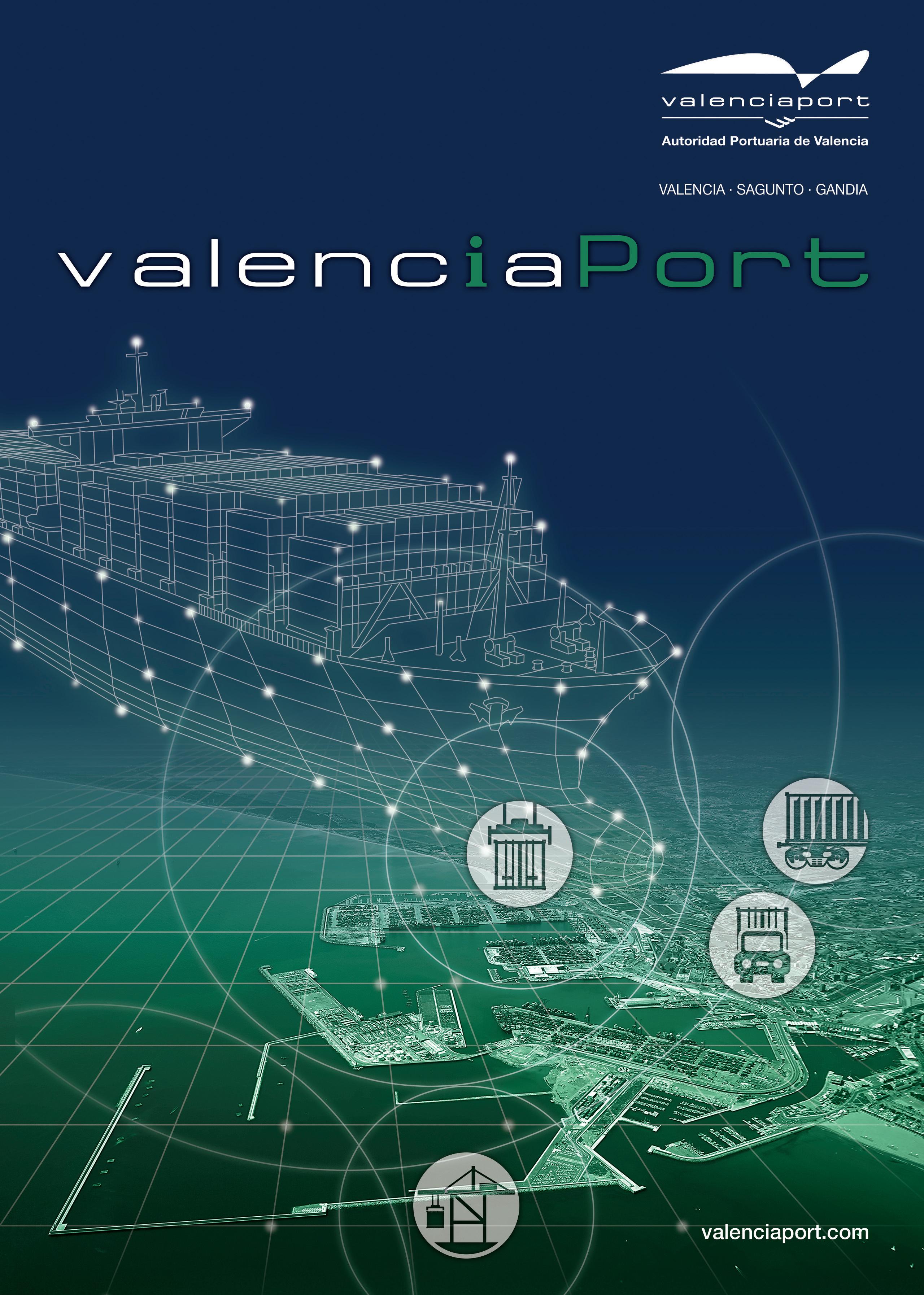
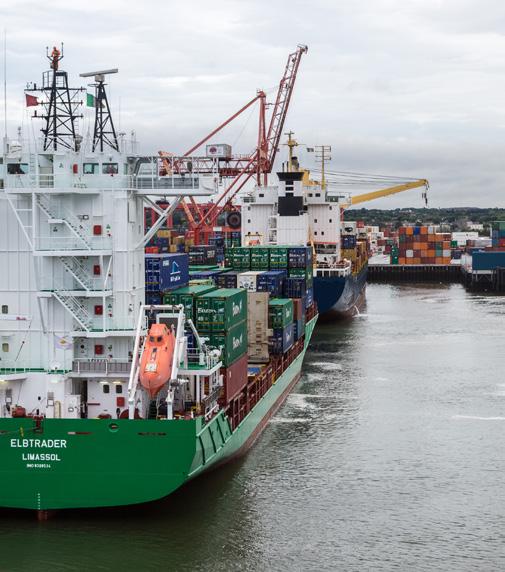
to enjoy a renaissance. Market conditions – influenced by factors such as continuity of supply and sustainability – are presenting new opportunities in the short-sea theatre of operations. But as our article on p22 highlights there are challenges and risk factors to navigate. The cover shows short-sea vessels in the Port of Dublin, Ireland























Bénin Terminal, a subsidiary of Africa Global Logistics, has secured €75 million in funding for the extension and modernisation of the Port of Cotonou.
The project will double the terminal quay to 1100m, add 15ha and increase quay and yard cranes as part of seeing capacity rise from 500,000 TEU per annum to one million TEU per annum. Completion of the construction worksis scheduled for 2026.
A banking consortium consisting of Societe Generale Benin, Vista Bank, Ecobank, CBAO Groupe Attijariwafa Bank and CBAO BENIN is providing the funding.
The expansion project expects to employ nearly 600 workers at the peak of construction, with an anticipated 200 direct and indirect jobs being generated as soon as the work is completed, including machine operators and technicians. Bénin Terminal said it is also keen to ensure that local companies are participating in the execution of the planned work.
Bénin Terminal has invested €216 million since 2013 at Cotonou as the port continues its role as a regional logistics hub serving Niger, Mali, Burkina Faso and Nigeria.
Canadian shipping company Canada Steam Ship Lines (CSL) has signed a new 21year strategic partnership with Australian resources company BCI Minerals Limited that will see a diesel-electric transshipment vessel assigned to support the development of the Mardie Salt and Potash Project on the Pilbara coast of Western Australia. Construction of the vessel is due to start in Spring 2026, with delivery due in mid-2027.
The Indian government has approved the development of a new port in Vadhavan, near Dahanu, Maharashtra, citing that this facility is potentially capable of “redefining India’s maritime trade.”
The total project cost, including land acquisition, is estimated at Rs762bn, and will fall under the remit of a new Special Purpose Vehicle (SPV) formed by the Jawaharlal Nehru Port Authority (JNPA) with 74% and the Maharashtra Maritime Board (MMB), which retains 26%.
This project will eventually develop an annual capacity of 298 million metric tons, including 23.2 million TEU, while being an integral part of the India-Middle East-Europe Corridor (IMEC). Cargo will be handled across nine container terminals, four

multipurpose berths, including a coastal berth, four liquid cargo areas, a roll-on-roll-off berth, and a coast guard operation.
■
project in India has been approved
In gaining approval, the project has overcome strong opposition from the local population and environmental groups, although support was gained from the influential Dahanu Taluka Environment Protection Authority (DTEPA).
The government has stated that the Vadhavan Port Project offers a “substantial opportunity for investors” although further details are awaited.
Kuwait is seeking to revive plans to develop a port to act as a major hub for the northern end of the Arabian Gulf.
This news follows a visit to the Gulf state by a Chinese delegation that has been reported by Kuwait’s state news agency as undertaking “in-depth technical and field discussions” relating to a number of infrastructure projects, which include the construction of the Mubarak Al-Kabeer port.
This project ceased building activity around 10 years ago despite being partially complete. The new process is also timely
US Customs and Border Protection (CBP) has approved a proposal from Ports of IndianaBurns Harbor to develop the first international container terminal on Lake Michigan. This facility, due to be operational before the end of 2025, will be the only water-based container route for shipping to directly serve the greater Chicago metropolitan area via the Great Lakes. Currently, serving the Chicago market is by rail or truck via major ports in North America.
with Turkey, Qatar and the United Arab Emirates known to be working to support the ambitious plan in Iraq to generate a US$17bn road and rail network – the interesting point there is that Kuwait is not involved with its fellow Gulf state partners (and Turkey).
Kristen Smith Diwan, Senior Resident Scholar, Arab Gulf States Institute in Washington DC points out: “It has become clear that if Kuwait doesn’t move forward it will be left behind. That is already happening.”
There are challenges to overcome before any resumption
The Australian and Western Australian governments are investing AUS$661.6 million (US$439 million) in the Lumsden Point project at Port Hedland. The facility aims is to export battery metals such as lithium and copper concentrates and to support the import of renewable energy equipment, notably wind turbines and blades. Infrastructure Australia has said more capacity in this location is a national infrastructure priority.
of construction activity, most notably existing container hubs in the region at both Abu Dhabi and Jebel Ali.
Moreover, Kuwait’s location at the northern end of the Gulf means it represents a significant deviation for shipping lines that is highly unappealing due to time and cost implications.
The project also has a political dimension. Kuwait is a longstanding ally of the US in the Mid East region, but any partnership involving China will likely cause concerns in Washington DC and potentially put pressure on the US relationship.
Grindrod has secured a new contract from Transnet National Ports Authority (TNPA) to develop and operate a container terminal at Richards Bay in South Africa. The aim is to increase annual container handling capacity at the port from the existing 50,000 TEU per annum to 200,000 TEU per annum. This is expected to help alleviate ongoing congestion issues commonplace throughout ports in the country.
A question was asked from the floor in the Africa focus session of the recent Terminal Operations Conference, held in Rotterdam, as to what are the root causes and the cure for the poor vessel turnround times and other performance related problems experienced over an extended period in the port of Dar es Salaam? The answer, given by a panellist from Drewry Shipping Consultants, centred on the relevant issue of capacity keeping pace with demand and generally the need to build a more productive operation.
There is truth in this latter point but in seeking an effective solution this is not the whole story and in this respect the Tanzania Port Authority (TPA) may have ‘shot itself in the foot.’
Hutchison Port Holdings, through its subsidiary Tanzania International Container Terminal Services Limited (TICTSL), was formerly the operator of what is now known as Container Terminal No 2 in Dar es Salaam, the port’s main container handling facility. The four-berth terminal has an annual handling capacity of one million TEU and in 2023 handled 820,000TEU, a figure said to represent 83% of Tanzania’s annual container volume.
TICTS was in residence from September 2000 until September 2022 at which point its’ concession was terminated by the TPA against a background of alleged poor performance highlighted by extended vessel times in port.
Adani Ports & Special Economic Zone Ltd (APSEZ) was subsequently appointed to operate the terminal on a management contract basis. The TPA billed this as an interim appointment with the message given out that a process would follow for a full international tender for the concession of the terminal. The process did happen but, in reality, it was a very poor relation to a properly assembled and managed concession process.
Take a step back in time – in August 2022, the month before TICTSL was effectively ousted at Container Terminal No2 – AD Ports Group signed an MOU with APSEZ for strategic joint investments in ports and other logistics activities in Tanzania.
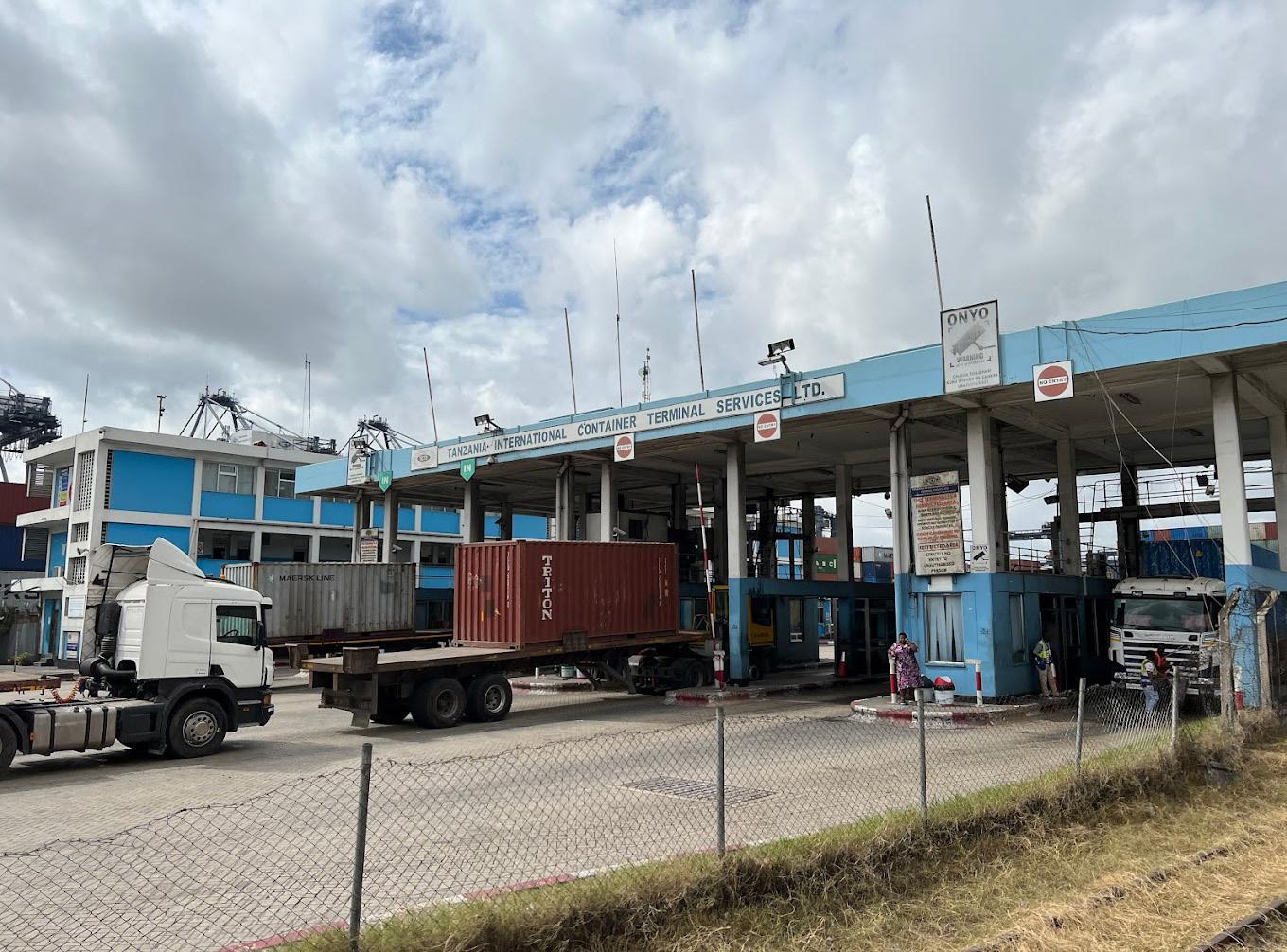
Fast forward – at end May 2024 it was announced that Adani International Ports Holdings (AIPH) had signed a 30-year concession agreement with the TPA to operate and manage Container Terminal No 2. Further, East Africa Gateway Limited (EAGL) was incorporated as a joint venture of AIPH, AD Ports (30%) and East Harbour Terminals Limited. APSEZ is the controlling shareholder and will consolidate EAGL in its books.
concession award process can be seen to have major deficiencies – a fact underlined by the complaints of various participating bidders. The deficiencies, in turn, exhibit the tell-tale signs of a concession award result that had already been decided prior to the process beginning.
What are the signs? There are several but here are three examples:
■ Marketing of the Request for
The concession award process can be seen to have major deficiencies which can lead to problems ‘‘
EAGL signed a Share Purchase Agreement for the acquisition of a 95% stake in TICTS with the purchase price of US$39.5 million covering handling equipment, manpower acquisition and other essentials. Adani will operate Container Terminal No 2 through TICTS.
On the surface this looks like a simple progression from one terminal operator to another in Dar but if you look below the surface all is not well. The
Proposal (RFP) for concession of TICTS was only advertised in a local newspaper – no international coverage as is the norm and no mention of a road show which is also commonplace in conjunction with such opportunities.
■ The Expression of Interest (EOI)/ RFP process was slated by bidders as unclear – in particular the submission criteria was vague promoting the potential for expulsion from the process due to not adhering to the rules (whatever they were?).
■ The process was also criticised from a timing point of view – it was rushed – and there was strong criticism of queries being handled in a haphazard manner. As stated at the outset this process may yet prove not to be the TPA’s finest hour. A fullyfledged concession process, conducted objectively and immune to external influences, is the proven path to a very successful operation. A process that falls short in this respect, which is subject to undue influence and irregularities, is prone to containing structural flaws which history shows throw up obstacles that impede efficient and economic operations, i.e. achieving the full potential of the operating unit. It is also grossly unfair to all bidders who ‘entered the arena’ expecting to be taken seriously and who committed time and not insignificant funds to participate in the process.
Certainly, against this background Container Terminal No 2 in Dar es Salaam will be interesting to monitor going forward.
The Port of Oakland and a coalition of 20 community, business regulatory and workforce partners have collectively applied for a federal grant to enable the fast tracking of the port’s conversion to 100% zeroemission cargo handling operations. The grant is worth US$417 million and is being requested from the Environmental Protection Agency (EPA) Clean Ports Program: Zero-Emission Technology Deployment Competition.
HRADF, the privatisation agency for Greece, has confirmed that €24 million in funding from the European Union has been secured for the northern Aegean Sea Port of Alexandroupolis. These funds are for dredging and construction of road infrastructure. The port is seeking a primary role in the energy industry, with Gastrade developing a floating gas and regasification unit, along with supporting a pipeline linking Greece and Bulgaria.
The European Commission (EC) has approved a €570 million Italian scheme to incentivise ships to use shore-side electricity when berthing at ports in the country. The scheme takes the form of a reduction of up to 100% in electricity prices, which means that there can be lower electricity prices for ship operators when purchasing shore-side electricity. Achieving this position means electricity costs are at a competitive level with fossil-fuelled engines.
A new US$2bn cargo port is planned at Ba Ria in southern Vietnam. It is to be developed by a consortium consisting of Vietnamese State Capital Investment Corporation (SCIC), Hanoi-based Geleximco Group, and Ho Chi Minh City-based International Transportation and Trading (ITC).
According to the Ministry of Transport in Vietnam, the new port will be developed in two phases, with the first component due for completion in 2030 and offering two dock areas to accommodate ships up to 250,000dwt.
The existing Ba Ria-Vun port facilities comprise seven berths with a total container handling capacity of almost 7.7 million TEU per annum. However, with an average of 8.0 million TEU handled per annum across facilities in recent years, there are ongoing congestion issues impacting

performance and limiting future growth potential. Hence the requirement for major new capacity to meet demand over the longer term.
The Ministry believes that Phase 1 of the project is consistent with the country’s

The Government of Gambia has signed a 30-year concession with the Turkish port operator Albayrak which signposts future port development in the West African nation. Sell-side Transaction Advisor for the deal was Netherlands-based MTBS.
Speaking to Port Strategy, Robert Schot, Senior Manager, MTBS, explained: “Our role as Transaction Advisor was to support the Gambia Ports Authority during the negotiations process. This entailed strategic advice on the preferred contract set-up, financial advice related to the viability of the project, technical advice which included the required design specifications and legal advice in drafting the concession and shareholder agreements.”
Under the terms of the concession, Albayrak will rehabilitate the Port of Banjul
and develop a new deep-sea port in Sanyang. The latter requirement is essentially an acknowledgement that the port of Banjul, located in a dense urban area, has only limited potential for further expansion and faces difficulties with landside access – truck access - in times of heavy usage.
Sanyang is located just over 40km from Banjul and offers deep water as well as being located in close proximity to international road connections. The masterplan, as conceived by Albayrak, is to develop the new port on a phased basis with operations covering a wide range of cargo handling activities spanning container, general cargo, dry and liquid bulks etc.
■ The existing Ba Ria-Vun terminal facilities are operating beyond design capacities, hence major new capacity is on the agenda
overall aims for its marine facilities relating to keeping pace with future demand and ship sizes.
Two 500m container berths are envisaged. Overall, the port will be industrial in character and additionally feature a free zone, industrial zone and agricultural and fish processing zone. Albayrak will seek other investors to participate in the areas of planned activity and in conjunction with support activities in the logistics and other sectors.
The short-term development works at Banjul will have a strong focus on upgrading container capacity and overall terminal performance. This meshes with the Banjul Port 4th Expansion Project, now underway and financed by the African Development Bank, which comprises four key objectives: reduction of vessel waiting time; avoidance of congestion and costly associated payments, investment in new capacity, generally boosting efficiency via digitalisation, facilitating improved traffic flow around the port and the provision of cost-effective and reliable green and low emitting ferries.
Over the longer term there is the possibility of the relocation of the port of Banjul to Sanyang with the old port being developed on a real estate basis incorporating purpose-built marinas and facilities for cruise vessels.
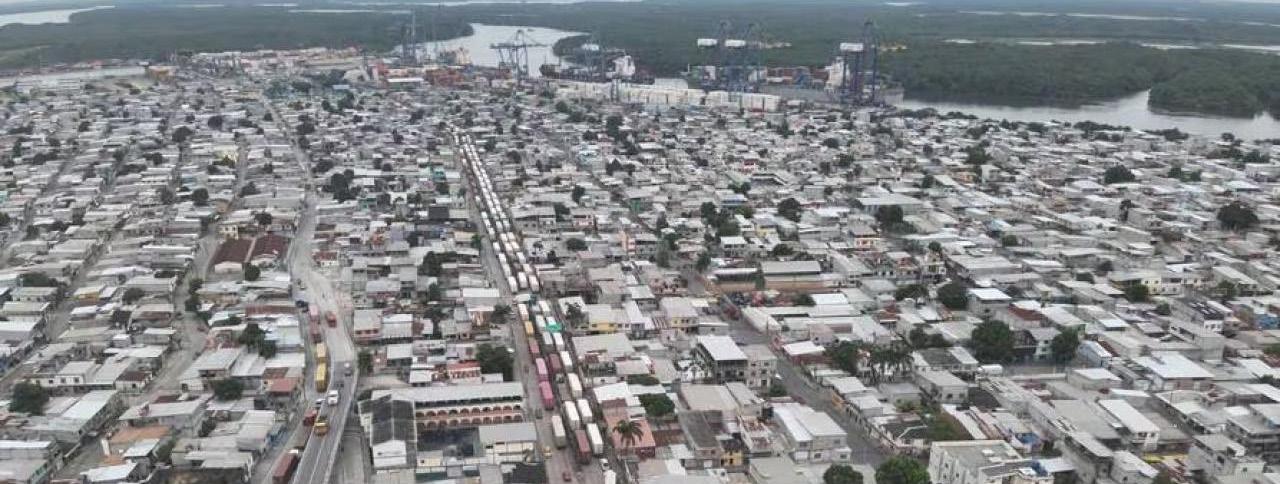
The turbulence now prevailing in Ecuador –spanning economics, business agility, security and other issues - is mirrored in the country’s maritime port sector which in recent years has seen a significant injection of new capacity but left in its trail fundamental differences between the various terminals, particularly container terminals. The differences are said by some to amount to a corrosive competitive imbalance between the terminals and especially those clustered in or around Guayaquil.
This competitive imbalance has, in turn, generated its own problems and challenges which have had a notable impact on the fruit exporting sector, now more important than ever to Ecuador’s economy. With the oil sector in decline – maturation of wells, lack of investment, uncertainty over production in Yasuni National Park etc. – fruit exports, and notably bananas for which Ecuador holds the status of No 1 exporter in the world, take on much more importance in the economic equation.
Yet, just as this situation is in play, the logistics associated with fruit exports have become more challenging. The trigger point for this can be seen to be the recent decisions made independently by Maersk and MSC to relocate their terminal operations from ICTSI’s Contecon, Guayaquil facilities to DP World’s Posorja terminal and the Narportec terminal respectively.
Use of Posorja, the Banana Marketing and Export Association of Ecuador has calculated, entails an additional transport cost of US$130 per container.
MSC’s decision to move to the Narportec terminal, owned by Dole, has generated massive congestion especially on peak days - Wednesdays, Thursdays and Fridays. Access to Narportec is via urban areas of Guayaquil and very narrow streets. With large traffic volumes congestion is inevitable. This means not inconsiderable costs resulting from delays plus truckers being exposed to theft, extortion
The objective is always a level playing field which leads to the tried and tested situation of market forces acting as an effective competition regulator ‘‘
and safety issues due to the current troubled security situation. The neighbouring terminal of Terminal Portuario de Guayaquil (TPG) is similarly adversely affected.
Such challenges add to an already lengthy list of difficulties that banana exporters in particular face, ranging from biosecurity issues such as preventing Fusarium to delays at the Panama Canal. It is also ironic that both extended and congested supply lines contribute to a further exacerbation of an already troubled security situation and allied to this greater opportunity for drug trafficking, now a major problem for Ecuador.
Both Maersk and MSC moved their terminal operations with strengthening their margins in mind – an opportunity presented by the competitive imbalance between terminals. Compared to the original terminal facilities concessioned by the state to Contecon in 2007 other terminals such as Posorja and private terminals like the TPG and Narportec terminals operate under more favourable fee and tax regimes which give them more room for manoeuvre when it comes to attracting and retaining clients.
National port masterplans or single port region masterplans often contain elements which aim to iron out the inevitable competitive differences between terminals which spring from a multitude of sources – the different
■ Competitive imbalances have consequences. In Guayaquil following changes of terminal by liner operators, there is now frequent extreme landside congestion around the Narportec and TPG terminals in turn leading to truck driver safety and other security issues
timing of developments, a different legal basis for set-up, varying fees including some parties that do not have them relating to terminal occupation, different levels of applicability regarding rules and regulations that effect service delivery, differences in mandatory investment, insurance requirements and so on.
The combination of such factors can often result in big competitive differences between terminals. It is normal to address these through master-planning or other government-backed instruments. The objective is always a level playing field which leads to the tried and tested situation of market forces acting as an effective competition regulator.
The instruments used to build a healthy competitive climate should also be forward looking – if one party plans to add a major new slice of capacity what will the impact be? if it is a further development of an existing terminal, then is it appropriate to offer all the tax and other breaks given with the original terminal development?
Ecuador’s situation where it has diverse terminals that have come into service in different ways – for example Contecon via an international tender for the concession, DPW at Posorja via the direct award of a concession and TPG and Narportec as a privately-owned terminals – and which operate under different regimes is a classic one whereby intervention may be required to achieve the premier goal of a level playing field. This will ultimately strengthen supply chains and contribute to an improved economic and security situation, as well as a much-improved port sector investment climate underpinned by legal certainty – essential steps today in Ecuador.
The Government of Canada is investing up to C$51.2 million (US$37.5 million) in 19 digital infrastructure projects to help strengthen supply chains. Included are PSA Halifax’s container terminal’s digitalisation initiative and Vancouver Fraser Port Authority’s gateway optimisation and forecasting project.
European specialist in transport, mobility, logistics, environment and circular economy, Magellan Circle Italia, has confirmed a new strategic alliance with ESG specialist, EETRA. The aim of the partnership is to accelerate the transition towards more sustainable practices in the mobility and transport sectors by developing solutions for the digitalisation of the port and intermodal sectors, while also preparing for the future regulatory landscape.
The Maritime Administration (MARAD) has released a request for proposals to construct the first US Centre for Maritime Innovation. The project falls within the Maritime Environmental and Technical Assistance (META) programme and is expected to assist in the study, research, development, assessment, and implementation of innovative marine technologies and practices.
Work on the India-UAE leg of the strategic India-Middle East Europe Economic Corridor (IMEEEC) has reportedly commenced. As a result, the digital platform will be exchanging information between two ports in two countries.
Malaysia plans to build a new smart container port in the state of Negeri Sembilan on the western coast of the Malay Peninsula and facing the Malacca Strait.
The US$425 million port is expected to include berthing of 1.8km and an operational area of 809,300m2. It will also be the first box facility in the city of Port Dickson in Negri Sembilan state.
Anthony Loke, Transport Minister of the Government of Malaysia has stated that the border area between Negri Sembilan and Malacca had been decreed as a port area in 2017, before explaining further: “This smart container port, although located near the Kuala Linggi International Port in Melaka, will not be in direct competition as the latter will be more focused on the oil and gas sector. On our part, the government welcomes any private initiative and investment if it is to further improve our infrastructure such as port services.”
Interestingly this port project is planning to be the first facility in Malaysia to utilise artificial

intelligence (AI), meaning that it will potentially utilise a number of key AI functions. These include: automation and efficiency to gain faster turnaround times; increased throughput, and reduced labour costs, predictive maintenance to help minimise downtime, reduce repair costs, and extend the lifespan of port equipment plus optimised logistics through AI algorithms to streamline the routing and scheduling of container ships and trucks to reduce congestion and lower fuel consumption.
Other key AI-led functions involve enhanced security, which can safeguard against cyberattacks, data-driven decision making to support more informed decisions, optimisation of resource allocation, and improved strategic planning and environmental sustainability to contribute to more sustainable port operations and meet environmental goals.
Fundación Valenciaport has confirmed it is working on the development of an innovative 5G mobile communications laboratory (5G+ VLCPortLab) in partnership with the Institute of Telecommunications and Multimedia Applications (iTEAM) of the Polytechnic University of Valencia (UPV).
The aim of this initiative is to drive the development of mobile communications, advanced computing, digital twins, immersive applications and other next-generation technologies. The laboratory will consist of shared infrastructure, located at both the Port of Valencia and in the UPV, which will connect both entities by means of a dedicated high-capacity fibre optic connection.
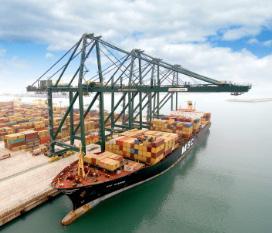
■ Fundación Valenciaport is linking with iTeam to develop a CuttingEdge 5G Laboratory for innovative technological projects
Fundación Valenciaport underlines that this latest development is a “driving agent for future innovation projects.” The planned work programme certainly complements extensive other development work now underway in Valencia. Indeed, the 5G+ VLCPortLab
project represents a major step forward in the expansion of Fundación Valenciaport’s infrastructure by providing comprehensive support to ongoing projects within the port environment. For example, the European initiative IMAGINE B5G, in which emergency and security use cases will be tested and the national projects of the UNICO 5G R&D plan Advancing 5G Digital Twins, with which real-time digital twin pilots are carried out, or the 5GNACAR of the UNICO 5G Sectorial plan, focused on the intelligent management of the 5G network. The Valenciaport Foundation is a centre for Applied Research, Innovation and Training, at the service of the cluster port logistics at the Port of Valencia, Spain.

Intensive care for your assets is essential to secure safe mooring operations. BollardScan is a world leader in testing the structural integrity of bollards, as Quayconsult is specialized in assessing and monitoring quaysides, sheet piles, fenders, rail tracks and cranes. All in a unique, non-destructive way. Approved by Lloyd’s and executed in a rapidly growing number of main ports worldwide. So why shouldn’t you test us? Get in touch with the experts: 0044 785 327 1190. Or even better: visit our booth at the SMM, Hamburg (Hall A1.418).
www.bollardscan.com www.quayconsult.com

A new body has been launched to elevate standards and streamline provisioning of cybersecurity services across the maritime industry.
It is designated the International Maritime Cyber Security Organisation (IMCSO) and has devised a certification programme for security consultants and a professional register, helping shipping organisations to confidently select experienced personnel.
The IMCSO Maritime Standard cyber certification scheme offers training across four disciplines. Cyber professionals who take the examination can qualify as an Offensive Security Practitioner or Maritime Cyber Security Specialist in addition to specific fields including Secure by Design and Cloud Security.
Iraq is accelerating efforts to utilise digitalisation at the ports of Umm Qasr (North and South port zones). During the first week of July 2024, a team of specialists from the International Maritime Organization (IMO) conducted a mission in Basra to assess the support needed forIraq to achieve its goal of implementing a maritime single window. Currently, 80% of Iraq’s imports move via Umm Qasr located in the south of the country..
An authorised supplier registry will also be made available by the IMCSO and will act as a record of approved cyber security suppliers within the maritime cyber security speciality. Applicant organisations will need to meet certain certification and accreditation standards such as ISO 27001 and ISO 9001 as well as strict certification criteria.
A risk register database will
■ Newly established IMCSO is a not-for-profit organisation planning to elevate standards and streamline provisioning of cybersecurity services across the maritime industry
also be maintained by the IMCSO containing the results of ship assessments and audits enabling relevant parties to access the cyber risk profile of any given vessel.
Innovative provider of logistics visibility solutions, BlueBox Systems, has launched BlueBoxCargo, an advanced tracking solution that combines the features of BlueBoxAir and BlueBoxOcean.
The aim of this new platform is
Kerry Siam Seaport Limited (KSSP), a multi-purpose terminal operator in Laem Chabang, Thailand, is partnering with Kaleris to introduce optimisation improvements. The Navis N4 Terminal Operating System is helping to reduce truck driving distances by 20% and container rehandles by 10%, while improvements in vessel planning and yard strategies are targeting better productivity and lower carbon emissions. KSSP handles over one million TEU annually.
Fintraffic’s Vessel Traffic Services is expanding its digital port services with POLO Port Activity, through a business deal with Unikie.
The Port Activity service is built on an open ecosystem basis, which ensures that ports can develop the service according to their own needs. It offers real-time arrival and departure times for ships, emission calculations, berth planning, information on detachment and mooring and invoicing services, as well as water and waste management orders, tug and pilotage services.
Unikie states that POLO was created to help advance the digitalisation of ports and their services and it is clear that it will play a key role with Fintraffic.
designed to provide unparalleled real-time tracking capabilities for cargo shipments, giving companies the ultimate supply chain optimisation tool by advancing logistics technology to simplify ocean (and air) freight management.
Rajant Corporation, the developer of Kinetic Mesh® wireless networks, and Embotech, a leading provider of autonomous driving solutions for private grounds and smart factories, are partnering to advance port autonomy. The companies confirm that testing of Rajant’s networking with Embotech’s autonomous driving solution, implemented in a terminal tractor, demonstrated highly reliable connectivity.
Rami Metsäpelto, CEO, Fintraffic’s Vessel Traffic Services, notes: “Fintraffic’s Port Activity application is already in use in more than 20 ports in Finland and Sweden and in about a couple of hundred different organisations. The application helps maritime logistics actors and ports to develop their operations in a more efficient direction through real-time vessel and port information. Fintraffic will continue to develop Port Activity in a customeroriented and open manner, where port-specific service development will continue to play a key role.”
Class society ABS has published a new notation that can be integrated with weather routing software systems. As a result, containership operators can load an additional tier of containers on deck with reduced risk of loss due to parametric rolling. On a typical 15,000 TEU vessel this equates to an extra 640 containers, or 960 boxes on a 24,000 TEU ship – reflective of a 4.5% increase in both instances according to ABS.


Konecranes is expanding its electrified portfolio and redefining operations between ship and container stack technology through new Port Solutions developments. The company’s new launches cover innovations in straddle carriers, integrated automated solutions and port services:
● Konecranes Noell Straddle Carriers modular power options – Supporting the shift towards more sustainable practices, Konecranes has redesigned its Konecranes Noell Straddle Carriers to give the industry greater flexibility with interchangeable power modules including hybrid, battery and hydrogen options. The uniform design facilitates quicker delivery times and ensures the ready availability of spare parts. Maintenance demands are reduced, and each unit is pre-equipped for hydrogen use in addition to hybrid and battery power. The modular construction simplifies power system upgrades to meet the diverse energy needs of terminals now and in the future.
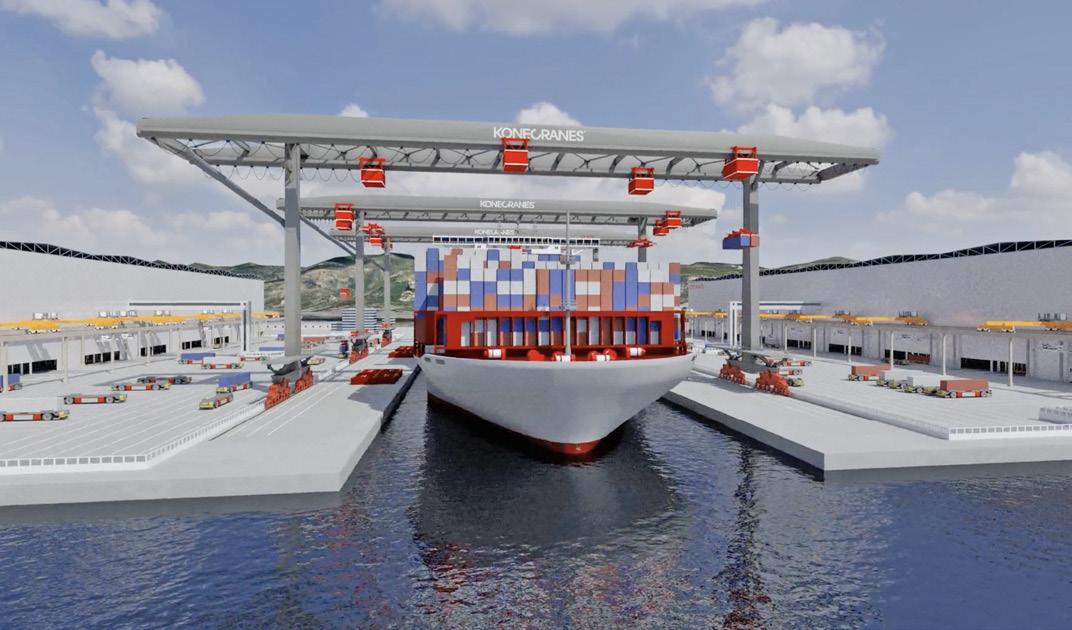
● Future Fields concept redefines the relationship between ship and stack
- Future Fields is an automation concept that incorporates an innovative multi-trolley ship-to-shore (STS) crane, an automated guided vehicle (AGV) and Automated High-Bay Container Storage to tackle challenges such as increasing vessel sizes and the limited availability of land. The outputs are improved productivity, greater consistency and higher capacity in container handling activities.
● Remote Support stops the
■ Konecranes ‘Future Fields’ is an automated handling and storage system designed with future needs in mind
downtime clock - Konecranes has renewed its Remote Support services for ports and terminals, which reduces the need for technicians to travel to site locations or wait on resources. Remote Support gives customers instant access to Konecranes experts through dedicated phone numbers, along with the Konecranes Support online platform and video calling for troubleshooting.
Konecranes has also introduced a heavy-duty version of its flagship E-VER electric forklift for lifting capacities of 18-25 tons. These units are now offered with increased capacity to meet the high-performance demands of industries such as steel and mining in addition to ports. The machine can lift 10% faster and accelerate up to 20% more quickly on slopes versus a diesel forklift, with reduced energy consumption and losses allowing the truck to use energy more efficiently, maintaining low energy consumption and zero tailpipe emissions.
Manufactured with clean energy, the powerful lithium-ion (Li-ion) battery pack fuels the
truck’s electric motors. Easily adaptable to the local power grid, it allows fast charging in under an hour and top-ups from braking energy during busy work shifts, and slower charging when not in use. A combination of high voltage and low current reduces energy consumption and losses, allowing the truck to use up to 90% of available energy. At the end of the forklift’s service life, the batteries can be used as emergency reserves at charging stations or as backup power.
With ever-growing industry demand for low-carbon solutions, this new range of lift trucks is part of the Konecranes commitment to power up for the future and
electrify its entire lift truck fleet by the end of 2026.
“Higher capacity on the E-VER is the next step on the road to zero tailpipe emissions across all of our lift trucks portfolio. As the global market transitions to carbon neutrality, an even broader environmental responsibility is clear. We have a product road map to deliver the right products at the right time, paving the way to a decarbonised and circular world by eliminating emissions in the entire value chain from production to usage and eventually enabling repurposing and efficient recycling,” explains Jeffrey Stokes, Director Product and Technology Management, Lift Trucks, Konecranes.
The construction division of HJ Shipbuilding & Construction (HJSC) has secured the Busan New Port West Container Terminal Phase 2-6 Transfer Crane Installation Project. The process involves building and installing 34 transfer cranes for a total construction cost of KRW187bn (US$134 million) over a 36-month period. These units stack containers in yards or load/unload them onto automated guided vehicles (AGVs) or trailers and this development follows Busan New Port Pier 7 (Phase 2-5), which became South Korea’s first completely automated terminal when it opened in April 2024.
Saudi Global Ports (SGP) has acquired three automated ship to shore quay cranes and three hybrid automated rubbertyred gantry units (RTGs) for King Abdulaziz Port Dammam. Adding this new equipment is expected to increase capacity from 2.5 million TEU to 3.2 million TEU and expands the existing fleet of 15 quay cranes and 47 RTGs. A further 15 hybrid RTGs are also on order for arrival in Summer 2024.
The Kalmar Collision Warning System has been installed on 36 straddles at the Maher Terminal in the Port of New York/New Jersey, with confirmation that a further 68 machines are to gain the same system throughout 2024 and 2025. By informing the driver of a potential collision, by visual and/or audible alarms, accident potential is significantly reduced.
ELME Spreader AB is investing for growth. Based in Älmhult, Sweden, the spreader manufacturer is currently celebrating its 50th anniversary and during Q3 of this year it is commencing construction of 1700m2 of additional space to facilitate increased manufacturing capacity in its existing product range and cater for new products for launch next year in the truck and crane segment across Europe, Asia and the US.
SeaPort Manatee has ordered two new Konecranes Gottwald ESP.7 Mobile Harbor Cranes. The port, based in Tampa Bay (FL), ordered the first unit in Q1 2024 and then decided to acquire a second crane at the start of Q2. Delivery of both machines is due before the end of 2024 and will complement the existing six cranes on site. The ability to run on electricity will help reduce emissions and increase capacity.
Konecranes has officially handed over eight hybrid one-over-three Konecranes Noell Straddle Carriers to Copenhagen Malmö Port (CMP). The equipment will be used at the new container terminal in Copenhagen. After arriving on site in Q4 2023, the straddle carriers have been fully assembled and tested on-site at the existing container facility. The new terminal is being developed several kilometres away at Ydre Nordhavn.
Sweden-based Hammer is marking 50 years of operations with the launch of two new models - Hammar 550, the world’s first Sideloader with 50 tonnes Safe Working Load, and the new flagship model, Hammar 500.
The Hammer 550 model offers a 50 tonnes Safe Working Load (CE-marked) and will be the world’s strongest Sideloader model. Initially developed for handling large cable drums, the design will offer flexible cargo handling operations.
Bengt-Olof Hammar, CEO, and owner, Hammar notes: “The Hammar 550 is a big step forward in broadening the Sideloader market and expanding what Sideloaders are used for. It has been developed for loads that are heavier and larger than any other Sideloader has previously been able to handle.” The first Hammar 550 was built in the second quarter of 2024.
The other major innovation is Hammar’s new flagship model, the Hammar 500. The company confirms that the Hammar 500 is based on a range of proven

technologies that have been merged and improved. For example, what is unique about the 500 model is its 6m crane reach and support legs that provide significantly increased stability.
These features allow a large handling area that, for example, enables the stacking of two containers two rows deep. The 500 model has support legs with three different operating positions providing great versatility, while offering a 36 or 45 tonne Safe Working Load levels.
Moving forward, Hammar
■ Hammar is celebrating its 50th anniversary with new products, including a new flagship model –the Hammer 500 sideloader
expects to continue to innovate and develop its service offering. “As long as the use of containers continues to increase, and companies are looking for more efficient and versatile logistics solutions, Hammar will continue to grow. We very much look forward to continuing to be the driving force in the industry, with a focus on service, innovation, quality, and sustainability,” says Bengt-Olof.
Kalmar, part of Cargotec, has launched a new electric empty container handler. This unit is based on the company’s proven electrical platform that uses the same electric drive system as the Kalmar electric reachstacker and Kalmar heavy electric forklift truck.
The Kalmar electric empty container handler is available in a single-stacker configuration
in 9 and 10 tonne capacities and lifting heights from five to eight units high. The doublestacker configuration is available in 10 and 11 tonne capacities, with stacking heights from 5+1 to 8+1 high.
Three different battery sizes are offered (163, 293 and 391 kWh) to support different load and operating-time requirements. The handler is designed to
minimise energy losses and optimise energy accumulation, thereby ensuring longer intervals between charges, improving battery lifetime and performance to save on battery size and cost.
A built-in thermal monitoring system ensures that the batteries remain within the optimal temperature range at all times during operations.
Kalmar has also confirmed a new deal to supply eight Kalmar Eco reachstackers to UK-based Maritime Transport.
This order, which also includes a seven-year Kalmar Complete Care entitlement, with Kalmar Insight as part of the package, was booked in Cargotec’s Q1 2024 order intake. The machines are
scheduled for delivery in two batches, with four units arriving in Q3 2024 and Q3 2025, respectively. Each reachstacker will utilise Kalmar’s Fleet Management Software, thereby enabling Maritime Transport to convert data into actionable and usable insights. This subsequently provides an effective way to
manage fleet operations and identify areas where efficiency can be improved.
Two of the new reachstackers will be deployed at Maritime Transport’s rail facility in Wakefield, northern England, with the remaining six at Hams Hall Rail Freight Terminal close to Birmingham, England.
The Port of Helsingborg has confirmed it is running a pilot test project for an autonomous terminal tractor.
Working in partnership with Terberg and EasyMile, the testing process will be undertaken outside of normal operations to assess the autonomous system’s capabilities and outline any technological issues, with the aim of live testing being completed during Autumn 2024.
The conclusions from the testing process are expected to underpin equipment selection for a new container facility that the Port of Helsingborg is planning to develop in 2030.
The pilot programme has a first phase that involves brake tests, load activities and mapping the tractor’s movements during cargo operations.
The port has stated that the vehicle’s path is initially restricted to container terminal Quay 906 and crane 20, with basic routes evaluated and approved before subsequent expansion to longer

distances and configurations to assess the total driving distance possible.
For the pilot programme, EasyMile’s safety driver will remain in the vehicle cabin so that the tractor’s on-board platform can be monitored,
ensuring safe driving behaviour and correct autonomous movements.
MOL and Volvo Penta are collaborating on trials for a pioneering new electric 4x4 ro-ro tractor, dubbed as the RME225.
This joint-venture is focusing on integrating a purpose-built electric driveline into the equipment, with the overall aim of helping customers remain competitive and profitable through the energy transition process.
The initiative aims to elevate and improve material handling operations for fleet owners such as terminal operators, and as part of the project, the trials will be
APM Terminals (APMT) has confirmed investment in 240 new pieces of equipment for five of its terminals in Latin America, Africa, and Europe. ZPMC is delivering 12 STS cranes to APMT Maasvlakte II in the Port of Rotterdam, four STS units for APMT MedPort Tangier in Morocco, two STS machines and nine RTG cranes for Côte d’Ivoire Terminal (CIT), with a further six automated RMGs and 14 oneover-one hybrid straddles for APMT Lazaro, Mexico.
utilising facilities used by DFDS at the Port of Ghent.
The RME225 features a Volvo Penta driveline consisting of three battery packs totalling 270 kWh of installed energy, an EPT802 gearbox, and two 200 kW propulsion motors. A separate 50 kW motor powers the hydraulic system and the fifth wheel. Designed for high productivity and performance, the RME225 aims to operate a full shift and provide a viable alternative to its diesel counterparts.
The trials are taking place at
SAAM Terminals has invested US$500,000 in a new state-of-the-art simulator from CM Labs Simulators of Canada. The machinery will allow training of new crane operators, while current drivers can enhance existing skills, by utilising controls that replicate actual equipment. This allows for exercises in varying environments and the simulation of common failures, thereby targeting enhancing operator safety and performance.
Two US ports have recently called for specialist crane services support.
The Virginia Port Authority (VPA) has issued a Request for Proposals (RFP) for the demolition and removal of up to four Ship-to-Shore (STS) Cranes at the Virginia International Gateway (VIG) terminal in Portsmouth, Virginia.
The selected contractor(s) will complete demolition and removal of the STS cranes with pricing specifically requested for a single mobilization to remove up to four cranes, as well as two mobilizations to remove two cranes at a time.
VIG currently has eight cranes across four berths, including six STS units that date back to 2007 when the facility opened under the management of former operator, APM Terminals.
the Port of Ghent, a strategic hub for largescale European shipping and logistics company, DFDS. The company is providing support for the trials through provision of a dedicated driver and a specially designated monitoring space at the terminal.
DFDS is hoping is involvement in the project will help reduce its environmental impact and aligns with its recent procurement of 100 electric trucks from Volvo, to complement the 125 heavy electric trucks previously acquired.
Aidrivers and ZF are collaborating to offer autonomous mobility solutions in port logistics, including the retrofitting of terminal tractors. Aidrivers will focus on the supply of the autonomous driving software ecosystem while ZF Mobility Solutions acts as the engineering partner for the integration, validation and deployment. The converted vehicles can operate independently in mixed traffic operations.
Also, Port of Miami Crane Management, Inc., (PMCM) has requested proposals from gantry crane contractors who are qualified and experienced in STS container crane refurbishment, upgrades, electronic upgrades, installation and repairs, with no less than 10 years experience.
The contract is to provide refurbishments and repairs for PortMiami Gantry Cranes 4-6 and 11-12.
Kalmar has introduced new branding to reflect its position as a fully independent company. It has debuted on the Nasdaq Helsinki following former parent company Cargotec choosing to separate its core businesses, Kalmar and Hiab. The partial demerger was completed on July 1, 2024 to enable Kalmar shares to begin trading on the Finnish stock exchange. Initial market capitalisation was set at €1.74bn (US$1.87bn).
WE ARE THE EXCLUSIVE DEALER FOR SEVERAL TRIPLE A BRANDS IN THE PORT EQUIPMENT INDUSTRY. OUR CLOSE CONNECTIONS WORK TO YOUR BENEFIT: YOU HAVE ACCESS TO SHORT SUPPLY LINES AND A WIDE RANGE OF PRODUCTS. WHETHER YOU’RE BUYING, LEASING OR RENTING, GPE OFFERS DIFFERENT FINANCING OPTIONS. THANKS TO OUR NETWORK OF LOGISTICS EXPERTS, YOU’RE ALWAYS SURE YOUR MACHINE WILL ARRIVE PUNCTUALLY, NO MATTER WHERE IN THE WORLD YOU NEED IT.
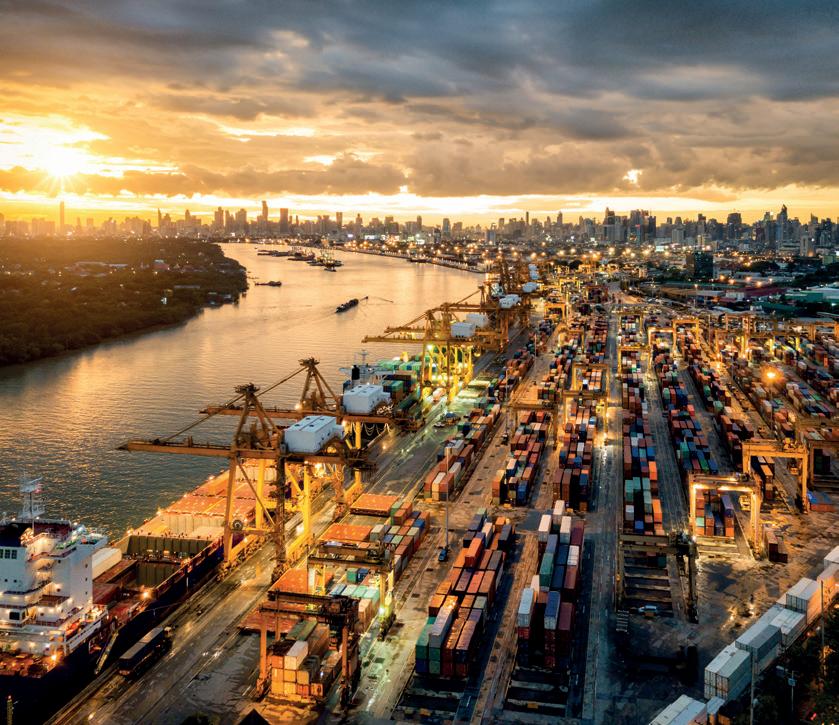






BARRY PARKER
While the ports, and business entities within them, are buttressed by the ideas underlying “free trade,” they are not immune from being caught up in political rip currents. So it is with the ship-to-shore (STS) container cranes that are used to work the behemoth container vessels along coasts in the States - with the Biden administration proposing hefty tariffs (in the order of 25%) on imports of cargo handling hardware from Chinaset to come into effect later this summer. The tariffs are part of a broader programme from the White House which also seeks to stem imports of electric vehicles, batteries, and computer chips from China, against the backdrop of frostier relations.
When looking at issues like this, I try to look past the political talking points and geopolitical fear-mongering, surely an impossibility in this election year (aforementioned “rip currents” says it all). The practicalities,


as presented by the American Association of Port Authorities (AAPA), and by a group of ports, in comments to the proposed tariffs, are that no manufacturing capabilities for producing equivalent cranes actually exist in the States. In its comments, responding to the U.S. Trade Representative proposals, the AAPA suggests allowing existing orders for Chinese manufactured
The USA’s Federal Maritime Commission (FMC) has requested additional information regarding the global operational alliance between Maersk and Hapag-Lloyd. This new proposed alliance, that would become operational in 2025, is something of an innovation in shipping networks because of its heavy reliance on transshipment in hub ports.
Gemini makes a distinction between a ‘mainline network’ and a ‘shuttle network’. The latter is used to serve important gateway ports such as Busan, Antwerp and Gdansk that receive direct calls from competing carriers. Thus, Gemini needs highly reliable terminal services and a strong on-time performance to be competitive in such ports. Gemini argues it is capable of
ship-to-shore cargo cranes to be exempted from tariffs (or tariff imposition delayed, if such measures on cranes are ultimately enacted following a proposed more detailed economic analysis).
To me, the exemption makes
a great deal of sense- though I would say that the port community (presumably through trade associations) needs to take the lead in actively prodding possible manufacturers in the States to climb aboard. Ports’ comments submitted re the proposed tariffs also highlight concerns about the role of cargo handling hardware in widening the supply pipelines and alleviating potential disruptions. If orders for cranes are delayed, or cancelled, disruptions in supply chains (albeit incremental) are more likely. As has been said before in PS, concerns over security coupled with tariff increases have the potential to slow the supply chain for new cranes which, in turn, raises the threat of congestion. Ultimately a balance between politics and practicalities has to be struck with the course of action suggested by the AAPA hitting a very sensible note in this respect.
delivering reliability because it operates the majority of the terminals in hub ports – through the sister companies APMT and the newly established ‘Hanseatic Global Terminals’ of Hapag-Lloyd.
The FMC has concluded that the submitted agreement is insufficiently detailed to assess its potential competitive impacts. The type of additional information requested is not published publicly as it is deemed commercially sensitive. I can only speculate about the concerns of FMC, but it is relevant to note FMC approved the current 2M cooperation as well as the once proposed P3 cooperation. The only area where Gemini is ‘bigger’ than those other cooperation agreements is in its inclusion of a
joint shuttle network and the joint selection of a terminal in a hub port. In other cooperation agreements, partners choose their terminal operator in a port individually.
This is not the case with Gemini, precisely because control over terminal operations in (hub) ports is critical for reliability. Likewise, shuttle (feeder) services are provided individually by the shipping lines in other alliances, but jointly in Gemini. While the current number of shuttle services is limited to services to large gateway ports, the cooperation agreement leaves the door open for potential additional joint shuttle services.
While there certainly will be
effects of Gemini for service providers in ports, like towage and terminal companies, the potential effects for end users are central for regulators. In my view it makes sense for the FMC (or any other regulator) to note that extending cooperation to shuttle networks in general poses a threat of reduced competition in ports served by such shuttles. Consequently, the regulator may only allow cooperation in the ‘shuttle network’ to services to ports in which sufficient alternative services are available. That is the case in the current Gemini network but would put a limit on extending cooperation in the shuttle network. In any case the FMC decisions will be critical for Gemini’s future.


BEN HACKETT
The Houthi entrance into the Gaza conflict changed the fundamentals of global trade and in turn economics. How easy it is to create chaos.
As we entered the final quarter of 2023, carriers were forecasting much reduced, even negative EBITDA for 2024 as excess capacity and a large order book was driving down freight rates. Cargo volumes were also flat with little growth on the horizon except possibly in the United States. The idea of port congestion around the world was not even on the horizon.
European countries were struggling to generate economic growth, with most either flatlining or slowly tipping into recession. Politically the issues surrounding populism and the voters feeling of being ignored and left out was pushing voters to support right wing, anti-immigrant parties in Sweden, The Netherlands, Belgium, Germany, Italy and the list goes on. The war in the Ukraine was trudging along with


no end in sight, only the arms industry was in expansion. Climatic conditions were also unpredictable with either too much or too little water in European canals and rivers. And then came October 7th and the ensuing war in Gaza which still drags on after nine months. And with the war came the Houthi’s in Yemen armed with top of the line weapons of war. As they decided to stop trade with Israel, they failed to discriminate vessel voyage origins and destinations thereby devasting the Suez Canal traffic by 60 per cent or more.
The consensus of opinion is that 2024 will not follow in the footsteps of 2023 and see a widespread continuation of growth in global dry bulk trades. The China factor is a big influence in this respect.
Analysts suggest that this year iron ore and coking coal imports into China will not match last year’s robust volumes. 2023 saw both Japan and the European Union record lower volumes of steel production – Japan down by three per cent to 87 million tonnes and the EU down by seven per cent to 126.3 million tonnes. China will not, however, field demand levels which will take up the slack generated by falling demand levels elsewhere.
With coal it is a similar story.
Immediate losers were Egypt and the Saudi Red Sea Ports. By November vessel owners with networks to and from Asia, began to use the Cape of Good Hope to reach Europe, the Mediterranean and the northern Red Sea ports. What should have been a relatively straightforward network realignment became difficult when trying to match required capacity with that actually available. Going into the 2nd quarter of 2024 we saw port congestion as vessels from
different routes were showing up and with equipment out of place.
As a result, freight rates soared to eye watering heights, beyond levels reached during the Pandemic for all types of vessels. The bonanza in freight earnings and panic reactions of shippers, looking for cargo space at any cost in order to keep their logistics supply chains intact, brought peak season cargoes forward thereby worsening the situation.
Carriers that had been projecting losses were suddenly flush with funds again.
Political uncertainty with chaos in France, the U.S. and a weak government in Germany are all adding to the uncertainty. Where are we going from here? Most likely the market volatilities and political uncertainties will continue, and this will certainly impact consumer demand, but this may take a while leaving the second half of 2024 unchanged from the first half. Good for some, bad for others.
Chinese demand is expected to be flat and not mirror last year’s healthy demand. There will be bright spots for example in India, Vietnam and Bangladesh but again these demand spikes will not serve to counter the drop in Chinese demand.
The US Department of Agriculture anticipates a different scenario with grain and soya. It sees a three per cent increase in volume up to 687 million tonnes.
In terms of development work impacting the longer-term prospects of the dry bulk trades, Africa is cited as a noteworthy area. There are positive signs of increasing mining activity spanning both core mainstream products and minor bulks uch as manganese.
A prime example in the former respect is the recent announcement by Rio Tinto that all conditions have now been met for the development of the world’s largest new iron ore mine – the Simandou mine project in Guinea, being implemented with Chinese and Guinean interests. Signalling its intent, Rio Tinto stated in its announcement that it will now press on with the development of 600+ kilometres of railway and port facilities that will facilitate the export of up to 120 million tonnes per year. First production is expected in short order – 2025.
Diverse parties also point to the uptick in smaller mining projects on the African continent. Some of these projects are responding to
specific requirements for instance in conjunction with EV/battery production but there are also other influential catalysts at work. Leading law firm White & Case notes:
“Mining & metals projects across Africa are benefiting from a sea change driven by the COVID-19 pandemic, acceleration of the energy transition and Russia’s invasion of Ukraine. Critical minerals and the mining sector more broadly have become part of energy security policies across developed markets. Industries buffeted by supply chain disruptions and ESG pressures also seek their own security, too, directly investing in or partnering with miners to secure supply.”
With uncertainties over the vector of deepsea container flows in the wake of political upheavals, the emphasis is increasingly focusing on shortsea shipping. How will this develop and what are the key issues for maximising demand? Andrew Penfold takes a look…

Shortsea shipping has been the poor relation of the container trades for many years but shifts at the macro level – political and environmental – are increasingly focusing attention on this sector. Of course, by definition, shortsea markets are local and factors impacting on the European trades may not be directly replicated in other major regions. Despite this, certain key trends are emerging that will shape the future markets. There are major barriers to maximising demand, however.
When analysing shortsea flows, it is vital to differentiate between feeder containers and direct intra-regional flows. Feeder operators are extensions of the deepsea players and will always wait for the arrival of the deepsea vessel if there is a service delay. This places pressure on schedules, with the feeder operator having little direct influence over schedule reliability. On the other hand, lines and shippers focusing on direct intra-regional flows will be primarily competing with efficient ro-ro ferry services where regularity of service and minimised journey times (along with costs) are the key drivers of market share.
Several operators have sought to combine these market sectors – a superficially attractive idea – but have repeatedly seen uncertain volumes and forced reliance on lower value commodities in the intra-regional container trades where time pressures are not so acute.
Figure 1 summarises the split in container traffic by type in the Hamburg-Le Havre range in the period between 2011 and 2023. Up to 2020 container demand growth was largely funded by transshipment, with shortsea traffic restricted by the pace of globalisation and (in the European market) by the post-Brexit slowdown. There is, however, currently renewed interest for shortsea demand. Generally, lo-lo suffered in 2022 and 2023 as a result of Russian volumes dropping out, macro-economic uncertainty and destocking.
The role of ro-ro is further summarised in Figure 2. Total shortsea volumes were squeezed as globalisation went from strength to strength prior to 2018 but this downward trend was reversed temporarily during the Pandemic. In 2022 and 2023 the share declined because of Russian lo-lo volumes dropping out, but ro-ro trades with the UK remained stable. The share of shortsea is, however, now picking up again and
this is expected to continue as a result of renewed interest in diversified and shorter supply chains as well as improving trade relations between the UK and Europe.
The last two years have seen surprisingly strong shortsea demand in NW Europe. For example, at Rotterdam the increase in ro-ro traffic has more than compensated for the loss of Russian trade.
So, the picture is complex but new trends are emerging. How can these be maximised?
At the centre of market positioning for successful shortsea development – be it for terminals, shipping lines or forwarders – is the acceptance that this is a highly competitive market. Shortsea container operations represent a single link in a supply chain where existing ro-ro operators already offer a very efficient and reliable service. A terminal operator developing in this sector must focus attention on key deliverables:
● Offering competitive facilities. It is vital to provide port and terminal facilities that are suitable for current and future needs. This means berthing the vessels that are currently required and that will be a feature in the coming years. Here, the focus will increasingly be on the size of feeder vessels deployed.
● Moving towards long term commitments from customers. The more that long-term contracts that are entered into –with both lines and cargo owners – will be a critical mark of success. The fixing of durable contracts in a highly structured market will add comfort for volumes and expansion investment.
● Effective transport costs. Of course, this is a critical test. For shortsea lo-lo operators the key competition will be with accompanied and unaccompanied ro-ro ferries. In contrast to deepsea/feeder shipping the margins are very tight in the shortsea markets, with the build-up of inland delivery, port/ shipping costs and final delivery often resulting in very limited differentials. When inventory costs are factored-into the equation then delivery time becomes a key competitive factor. Generally speaking, containerisation can offer a cheaper transport cost but usually loses out on delivery times and flexibility. The cost differential in the UK (for example) can be very limited at 15-20 per cent between
the
higher cost-ro-ro and shortsea containers. There is little that the terminal operator or line can do to overcome this situation, but it underlines the narrowness of the market, with some cargo owners preferring to pay more for ferry flexibility.
● Investment in supporting infrastructure. As a shortsea terminal operator there is a great temptation to invest in supporting infrastructure – for example, barge lines, trucking or other shortsea terminals. As part of a ‘one stop shop’ strategy this can make sense, with the terminal offering a single transport solution, for example, between the Ruhr and Manchester. However, margins can be very slim for these projects and the amount of potential management time required for marginal gains can be excessive. Detailed analysis of the synergies available from these options is essential.
● Focus on attracting industry related investment to (or near) the port estate. Successful shortsea terminal operators have focused on locking-in major customers by assisting with on, or near, dock investments. This ‘Port Centric’ approach is well suited to the shortsea container sector and serves to provide further certainties to volume projections – although there are always counter-party risks with such an approach. The attraction of Lidl’s UK supermarket business near to the Moerdijk terminal in Rotterdam is a good example of this strategy.
● Environmental perspective. In the current markets environmental issues are coming to the fore. The provision of environmentally friendly facilities for shortsea shipping are clearly consistent with policy developments. Shortsea terminals will offer clear advantages from this perspective versus ferry and other modes, and this will boost market share. Provision of ‘green’ bunkering facilities will further boost attractiveness.
The first half of 2024 has been positive for shortsea flows, but as the process of restocking goods slows there will be some lower growth over the rest of the year. In the narrow NW Europe market, the modality has shifted in favour of lo-lo in the UK markets as routes to/from the north of the UK open up. In the near-term, demand will be primarily dependent upon the pace of underlying growth in the economies, but the general trend is favourable.
As the world moves in the direction of shorter supply chains and intra-regional development there will be a clear need for expanded capacity in the shortsea sector ‘‘
In the longer run the stars are aligned for stronger and sustained growth. The shift in favour of nearshoring seems certain to continue as a result of macro-economic and political shifts and this will continue to favour both ro-ro and lo-lo shortsea volumes. Any reopening of the Russian markets would provide a further upside to demand. The situation is positive and will certainly require further investment in modern well formatted shortsea terminals. With a growth rate of 3.5-4 per cent per annum the existing (modern) shortsea terminals in NW Europe will come under capacity pressure in the medium term. This will require further investment (where space is available) and a strong focus on increasing productivity within existing port estates.

Figure 1 summarises the split in container traffic by type in the Hamburg-Le Havre range in the period between 2011 and 2023. Up to 2020 container demand growth was largely funded by transshipment, with shortsea traffic restricted by the pace of globalisation and (in the European market) by the post-Brexit slowdown. There is, however, currently renewed interest for shortsea demand. Generally, lo-lo suffered in 2022 and 2023 as a result of Russian volumes dropping out, macro-economic uncertainty and destocking.

Figure 1 summarises Le Havre range in the period between 2011 and 2023. Up to 2020 container demand growth was largely funded by transshipment, with shortsea traffic restricted by the pace of globalisation and (in the European market) by the post renewed interest for shortsea demand o suffered in 2022 and 2023 as a result of Russian volumes dropping out, macro
In contrast to many port investments around the world the downside for modernisation and expansion of shortsea capacity is limited. The key risk is at the macro-economic level. If the economies slow over a sustained period, then demand will fall back. At the same time, the formatting of the proposed investment must be very carefully considered. Any rapid increase in the size of vessels deployed on the shortsea trades could see a significant redeployment of capacity if terminals do not offer the required access capabilities.
The role of Ro-ro is further summarised in Figure 2. Total shortsea volumes were squeezed as globalisation went from strength to strength prior to 2018 but this downward trend was reversed temporarily during the Pandemic. In 2022 and 2023 the share declined because of Russian lovolumes dropping out, but ro -ro trades with the UK remained stable. The share of shortsea is,
In addition, the market is highly complex and subject to numerous policy requirements from the EU and national governments. Careful monitoring and anticipation of these issues will be vital.
The role of Ro-ro is further summarised in Figure 2. Total shortsea volumes were squeezed as globalisation went from strength to strength prior to 2018 but this downward trend was reversed temporarily during the Pandemic. In 2022 and 2023 the share declined because of Russian lo -lo volumes dropping out, but ro -ro trades with the UK remained stable. The share of shortsea is,
As the world moves in the direction of shorter supply chains and intra-regional development there will be a clear need for expanded capacity in the shortsea sector. The large deepsea terminals will not easily compete for this business and the feeder sector will remain distinct. This demand will be accelerated by modal shifts, with lo-lo and ro-ro fighting it out on the shorter haul (high volume) trades.
At the same time, it is clear that much of the shortsea fleet comprises older vessels. There will be a need not just for terminal investment but also for new vessels – optimum sizing of these units will be a major issue.
At the policy level subsidies and permitting will continue to feature, but the basic argument for this sector will remain competitive cost and service issues. Governments need to facilitate the growth in the shortsea sector to capture the benefits. This will also be essential to unlock environmental gains.
Considerable investment must be focused over the next five years, or so, to maximise the potential in this sector.

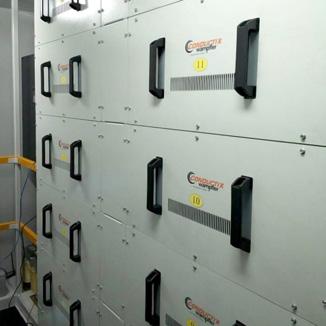





Converting a conventional RTG into an electrical one (E-RTG) means to shut down the diesel generator and to power the RTG with electrical power only – the emission saving, sustainable basis for automation. This is possible with electric power solutions, including E-RTG auto-steering and positioning systems, developed by Conductix-Wampfler: Plug-In Solution, Drive-In Solution, Hybrid Solution, Full-Battery Solution and Motor Driven Cable Reel Solution with CAP - Cable Auto Plug-In. We move your business!
www.conductix.com
Gdynia’s Baltic Container Terminal is the focus of a comprehensive terminal upgrade. Mike Mundy unveils the key steps which will deliver a significantly enhanced service offering

Gdynia’s Baltic Container Terminal (BCT), an operating unit of Manila-based International Container Terminal Services Inc., is the focus of a major investment programme designed to proactively meet user needs over the long term. Comprehensive investments are being undertaken by both the Port Authority of Gdynia and BCT with support from the European Union.
A key goal of the development programme is to provide access for higher capacity container vessels and with this in mind the Port Authority of Gdynia, at the end of 2022, commissioned Jan de Nul to implement a comprehensive dredging programme to deepen the Approach Track and Inner Basins of the Port of Gdynia. This has now been completed and following the completion of extensive terminal upgrade works at BCT, the terminal will be able to accept vessels with an LOA of up to 400m and draught of up to 14.7m. In particular, this is designed to complement BCT’s established role of handling direct deep-sea services as well as serving extensive short-sea/feeder lines.
The main construction work at BCT centres on the upgrade of the terminal’s Helskie Quay which is being re-developed to offer a depth alongside of 15.5m and draught of 14.7m over 730m, and the installation of a new third rail designed to facilitate the introduction of larger ship-to-shore (STS) cranes. These new generation cranes will provide a greater lift capacity, the ability to serve up to 25 rows of containers on deck and possess a span between the legs of 30.48m.
The final leg of the Helskie Quay, adjacent to the ro-ro ramp in the inner area of the dock, offers another 30m of quay with a draught alongside of 12.7m.
There are also supporting construction works underway which include a new intra-port road connecting the Helskie II Quay – which extends on from the main Helskie Quay for 176m – with a new logistics storage yard scheduled to come into operation in early 2026. The latter investment works are being undertaken by the Port Authority of Gdynia working together with BCT. There is also a new nine-hectare BCT staging area, again expected to come onstream early in 2026. Going forward, there is the prospect of additional terminal areas being added.
Wojciech Szymulewicz, CEO, BCT notes: “We are pleased to partner with the Port Authority of Gdynia to upgrade Gdynia’s container handling capacity and performance to
meet the new needs of shipping line and other clients. We recognise that the terminal development works have been challenging for liner clients but sincerely believe that the ‘prize will be worth the pain,’ notably our ability to serve higher capacity vessels and offer enhanced service levels on both the quayside and landside.
“We expect,” Szymulewicz elaborates, “diverse benefits to flow from the implementation of the latest Navis terminal operating system and our comprehensive equipment acquisition programme. In the pipeline, together with new generation STS cranes, are new rubber tyred gantries (RTGs), 15 tractor and semi-trailer container sets and other mobile equipment including reach stacker and heavy-duty forklift units.
Extensive dredging, quay redevelopment, equipment and IT systems acquisition position BCT to meet new client needs and fulfil strategic requirements ‘‘
“Once the overall development programme is fully bedded in, we anticipate an improved performance across the board, spanning all key areas: ship side operations; at the terminal gate, consolidating and expanding our already successful intermodal rail activities, yard operations and in conjunction with customer support functions.”
IMPORTANT STRATEGIC ROLE
The upgrade of the Port of Gdynia and BCT is also important in the context of TEN-T system development with Gdynia representing an important component of the Baltic SeaAdriatic Sea (BSAS) European Transport Corridor (ETC). This corridor is the subject of ongoing development with plans foreseeing the completion of the core network for BSAS by 2030 and 2040 for the extended core network.
Recent times have also seen BCT fulfilling an increasingly important role in the handling of special military equipment. BCT meets the stringent security requirements set by the Polish army and its NATO allies.
Is there room for ‘green levers’ in port concession arrangements? The pros and cons are examined here drawing on the ideas discussed at a recent WAPPP* roundtable
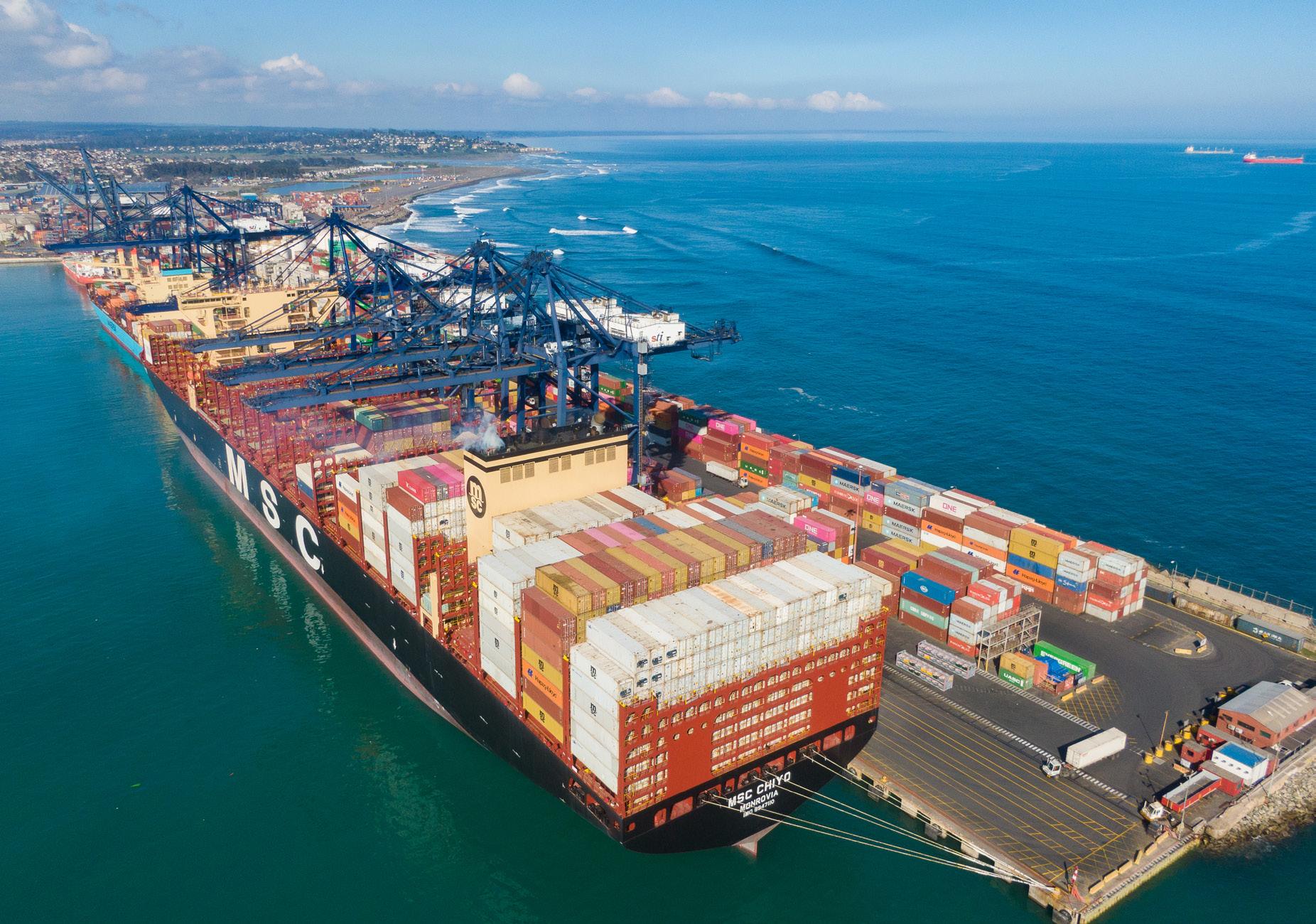
Governments, port authorities and terminal operators are exploring ways to make ports greener. This is a multifaceted challenge ranging from deploying electrified equipment for cargo handling, to providing cleaner fuels for bunkering ships but also being a node in the supply chain for clean fuels, and even using port land (and water) for clean power generation. All these ideas require specific parties to take on the cost and risk (and reap the benefits); aspects that are central to port and terminal concession agreements (PPPs).
In October 2023, DP World and APM Terminals published a ground-breaking white paper. Entitled Reaching a tipping point in Battery-Electric Container Handling Equipment it set out the companies’ call to action for the entire port ecosystem and Container Handling Equipment (CHE) value chain to accelerate towards a tipping point for widespread adoption of Battery-Electric CHE. The report sets out five key levers that could be used to achieve this. Three of them relate to technical and operational aspects but significantly, the fourth is aimed at port authorities (and affiliated government and public entities) and relates to the possibility of introducing green levers in port and terminal concessions.
Specifically, the potential new green levers the report suggests are:
● Award extra credits to concession bids with zero-emission fleets.
● Require that bids for new concessions rely on zeroemission fleets.
● Offer to extend concession durations only to those terminal operators who agree to replace their diesel fleets with zero-emission CHE.
● Offer favorable financial lease tariffs or discounts to terminal operators who invest in a zero-emission CHE fleet
● Assisting terminal operators with the infrastructure adjustments required for zero-emission CHE fleets to operate
Clearly the industry is at the very early stages of looking at such green levers. Plus, at the same time there remains a great deal of uncertainty (and hence risk) with regard to the whole decarbonisation story. It is interesting to note that the African Development Bank, for example, is at the early stages of creating a Green Ports Certification Scheme which would help in this respect. What is also clear is that there is much capacity building to be done in terms of expertise and knowledge to support such initiatives.
Another significant aspect, particularly in relation to Battery-Electric CHE, is the simple feasibility or otherwise of providing electrical power for charging (and the “greenness” of this power). The challenge is not just to design, supply and operate the CHE, but also about the wider power infrastructure of the port and country in which a terminal is located. In this respect, developed world locations such as North America, Europe and parts of Asia are clearly better placed, whereas some parts of the emerging world have much more rudimentary infrastructure which needs to be
■ Green levers in port concessions - new concessions appear to offer more potential than introducing these into existing arrangements
addressed first before any thoughts of Battery-Electric CHE can be considered. In this context, whether a terminal is small, medium, or large does not necessarily favour or deter implementation. Rather, it is all about location, location, location.
The most practical way to introduce green levers into port concessions is in the bidding process for new concessions. Starting with a clean slate, port authorities and governments should be able to devise ways to reward bidders offering green(er) options, although some form of uniformity to ensure fair comparisons would be required.
Offering favourable concession financial terms to terminal operators who invest in a zero-emission CHE fleet is a sensitive issue because it cuts to the root of the “who pays” question. There is a danger that public port authorities are seen as the “bank” to fund such investment, having as they do a wide public and social remit that is not solely profit motivated. While clearly it would be advantageous for a port authority to select a concessionaire with whom both parties see eye-to-eye on this, it has to be a win-win solution.
Competition rules also come into play, because any discounted concession fees must be justifiable and fair - and legal. For example, an increasing number of ports already offer discounted port dues for more environmentally fueled vessels, e.g. based on the International Association of Ports and Harbors’ (IAPH) Environmental Ship Index, but this is a public, published, fixed tariff. Very different from a privately negotiated concession where the question of subsidies raises its head.
The financing aspects of green levers in port concessions are also significant because ultimately every concession must be bankable to succeed. Could the extent to which a concession is green result in a better interest rate, or availability, for loans? Environmental, social, and governance (ESG) green financing is certainly on the rise and new infrastructure project evaluation methods are being rolled out, but it remains early days on this question. Perhaps more significant is the fact that green lever port concessions ought to have better bankability. Time will tell.
The World Bank takes the view that port authorities and governments cannot be expected to meet the cost of green initiatives in terminals, and that in any case, what first needs to be addressed is the bigger picture, namely regulations by international policy-setting bodies such as the International Maritime Organization (IMO). In other words, rather than individual port authorities having to take on board additional cost and risk, the regulatory playing field needs to be clearly set out first. Internationally agreed rules - for example similar to the established emission control areas (ECAs) for shipping in Europe and North America - would provide a backbone for greener concession negotiations. Multilateral development banks can also play a role as facilitators when providing financing or offering technical assistance, based on their policies and programmes.
The DP World-APM Terminals white paper also makes a key point about exponential growth in new technology reaching a tipping point when it becomes more competitive than conventional technology in three dimensions: affordability, attractiveness and accessibility. Historic examples such as telegraphs and electric power are cited as well as steep growth rates of more recent technologies such as solar
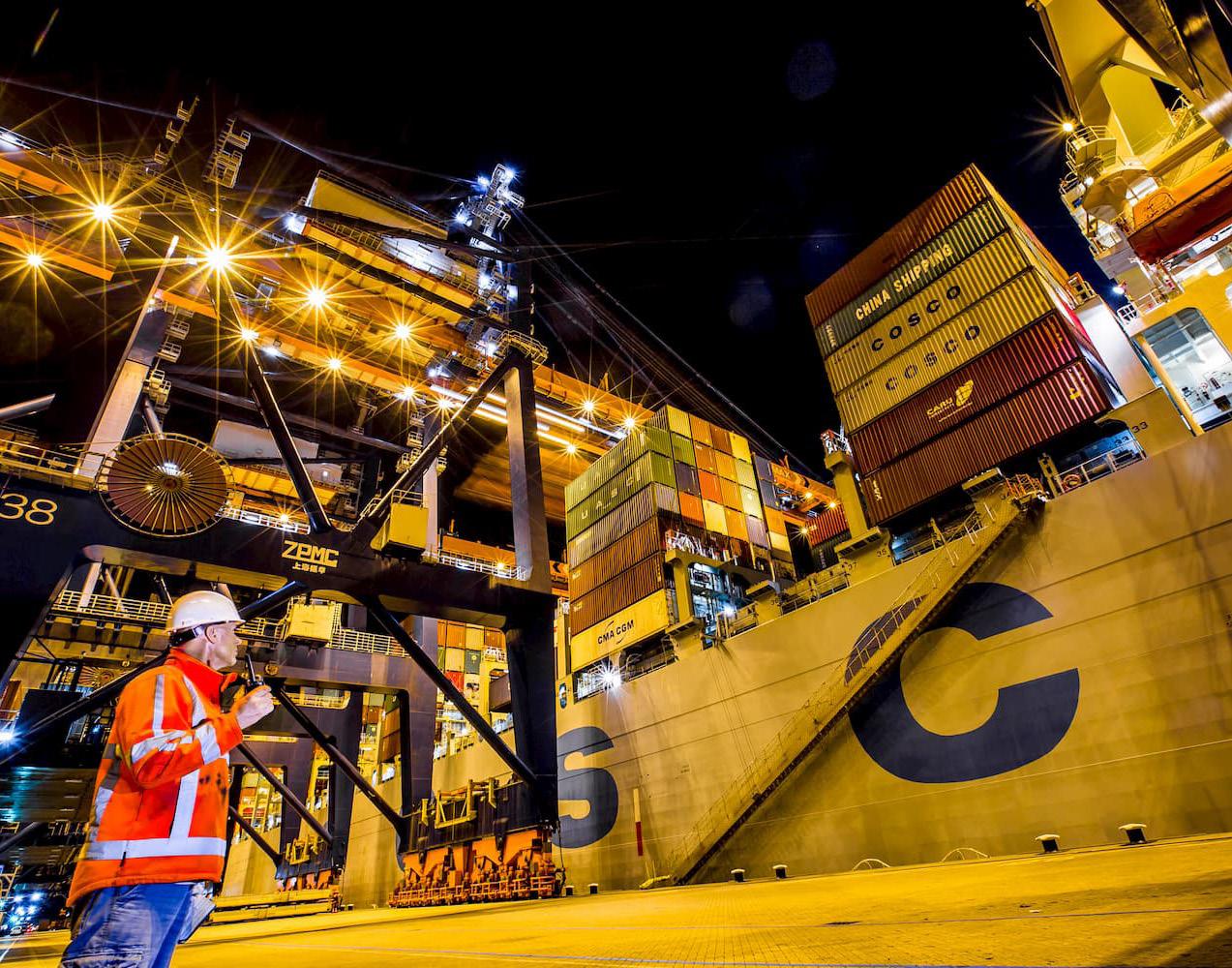
power, electric vehicle sales and battery storage sales. More widespread use of Battery-Electric CHE may well be coming sooner than might be expected, therefore.
To further this aim, DP World and APM Terminals are establishing a grouping of interested parties under the name of ZEPA (Zero Emission Port Alliance). Careful to make it clear that all ZEPA activities will be strictly structured and undertaken in accordance with antitrust/competition laws, the group aims to gain and share knowledge, accelerate implementation and improve business relations. Membership is open to terminal operators, ports, equipment manufacturers and government entities.
The most practical way to introduce green levers into port concessions is in the bidding process for new concessions
The port concession PPP context for all of this is the fact that most of the world’s port and terminal concessions are already in place. Extending, renewing, and re-negotiating such existing concessions to build in green levers will undoubtedly be the most challenging option. As the Port of Gothenburg points out, as recently as 10 years ago, most new concessions hardly touched upon green issues. Renegotiation of existing concessions is already a complex and challenging exercise and adding in the green “wild cards” will not make it any easier. The market can and will however, likely adapt accordingly.
■ This article was written by Neil Davidson and Erik Wehl of the WAPPP* Port Chapter and reflects the discussions that took place during an online roundtable event held in May 2024 by WAPPP, supported by UNCTAD. The speakers at the roundtable, raising the ideas reviewed and assessing the challenges identified, were from the World Bank, DP World, Port of Gothenburg, and the African Development Bank.
*Based in Geneva, WAPPP is a global non-governmental organisation that promotes best practices in PPP to align with UN Sustainable Development Goals.
■
Rob Ward examines the pros and cons of the increasingly public dispute between Montecon and Katoen Natie over terminal operating rights in Montevideo

A long running dispute between Uruguayan port operators Montecon and Katoen Natie, sometimes simmering and sometimes flaring up, will now go to an international Arbitration Tribunal, to decide whether or not KN’s Terminal Cuenca del Plata (TRP) box terminal is allowed to operate a monopoly, or not, in the port of Montevideo.
Uruguay’s current President, Luis Lacalle Pou, has pledged to “watch over the national interest” as his government mounts its defence against the US$600M lawsuit filed by Montecon with the International Centre for Settlement of Investment Dispute (ICSID) - part of the World Bank) based in Washington DC - claiming the Uruguayan government is violating an Investment Promotion Agreement signed with Chile.
“We stand firmly behind the company [TCP] making the largest port investment [of more than $600M] in the history of Uruguay, as it will bring more work and other investments to Montevideo,” says Lacalle and insists that countering the Montecon lawsuit is “in the national interest”.
KN, headquartered in Antwerp Belgium, own 80% of TCP and the remaining 20% is owned by the Administracion Nacional de Puertos (or ANP) which is a branch of the Uruguayan government and also acts as the port authority for Montevideo and various other ports in the South American country.
“To say that this complicates the situation and the status of the dispute somewhat, has got to be THE understatement of the century,” said one Montevideo shipping agent, who wishes to remain anonymous. “It also creates a monopoly situation in terms of container handling in Montevideo, and therefore for Uruguay as a whole, so I understand why Montecon is suing the government.
“However, if the ANP and the government want Montevideo to become THE hub port for the River Plate and the south of Brazil, then it does also make sense to concentrate resources
into one high-performing, efficient terminal. It is a very complicated situation, with arguments on both sides. Increasing capacity to more than 2.5M TEU certainly suggests that TCP is after ALL of Buenos Aire’s throughput and the Paraguayan boxes as Montevideo hinterland volumes alone do not justify such a huge investment.”
In 2023, Montevideo as a whole handled 1.13MTEU, with TCP taking 75% and Montecon, which has handled containers in Montevideo since the year 2000, chipping in with 25%. Just a few years ago these roles were reversed as Montecon handled between 60% and 75% and TCP the rest. Last year TCP added two new services (from ZIM and Cosco/ONE).
As soon as the container shipping lines realised where the future investments in equipment and infrastructure were headed they started re-deploying their vessels and services to the dedicated box terminal.
But, as Gustavo Hontou, Commercial Director, TCP, says: “Once the improved infrastructure works with the new berths complete then the remaining 25% will move to us and that is why Montecon are complaining.
“In recent years, total throughput for Montevideo has remained stubbornly below 1MTEU per annum but in any case we haven’t had the capacity to take all the volume for the whole port, but that all changes from the middle of next year.”
With congestion and operational problems at various ports along the ECSA (including Santos, Navegantes, part of the Itajai port complex, and now the floods at Rio Grande, in the far south of Brazil, as well as frequently documented complications in Buenos Aires), TCP has been picking up lots of extra transshipment cargoes but has been unable to fully capitalise on the maladies of others.
“Last year we operated at 83% of capacity, which is very

Hammar is the world leading manufacturer of Sideloaders, self-loading vehicles for containers and more. A competetive quality solution for container logistics, special transports and terminal handling.
+ Made in Sweden since 1974, delivered to more than 122 countries world-wide
+ Lift, transport and transfer up to 50 tonnes
+ Increase safety and efficiency with grounded containers
+ One vehicle, one driver, anywhere, anytime
high and leaves no room for error,” says Hontou, who has been with TCP for more than 10 years. “However, from next year we will have two new berths, double from what we have today, and this will give us lots of options and flexibility.”
The Belgian outfit is adamant that the agreement signed with the current Uruguayan government does not breach either Uruguayan or international rules and regulations, and that the controversy is over-shadowing the huge investments – some US$600M planned new spending, front loaded to the first few years of the renewal; compared to the US$455M when the deal was signed three years ago) – they are undertaking in Montevideo.
But Montecon, which is owned by the Neltume Ports consortium, a joint venture between Ultramar, the Chilean stevedoring group (with 60% shares), alongside ATCO, a Canadian outfit based in Alberta (with 40%), says it has invested more than US$100M in the port over its 24 years of operations (including warehousing and reefer plugs) and paid more than $110M in fees to ANP, and so deserves compensation if it can no longer handle containers.
Montecon, which operates three Liebherr LHM 800s in Montevideo, and its shareholders are equally as certain that the bid to grant TCP a monopoly is against international trading rules as well as “being anti-competitive and a contradiction of the Uruguayan Constitution”. Now it will be left to lawyers and judges to determine if there is a case to be made and who is right.
On top of this many shippers and port users in Montevideo are disappointed that the long-standing disagreement has broken out into such far-reaching warfare as they are looking forward to the US$600M of improvements that KN will be undertaking at TCP, which will increase capacity by 150% to 200%, from the current 1MTEU per annum up to “at least 2.5MTEU and possibly to 3M TEU”.
HUB PORT AMBITION
With its current expansion plan, TCP is increasing its quay length from 638m to 1368m and bringing in five more Ship to Shore Gantry Cranes (SSGCs) in July 2025, with the intention of becoming the Hub Port not only for the River Plate, but also for Southern Brazil. The lengthening will allow the facility to handle four ships simultaneously (two x 335m long and two x 300m) – as opposed to just two today – and the capacity and increased draught, which will improve from today’s 13m down to 14m, will allow Montevideo to siphon off even more cargoes from Buenos Aires, including Paraguayan transshipment volumes.
Hontou tells Port Strategy that the extra capacity is needed because large numbers of containers destined for Argentina and the terminals of Buenos Aires, can no longer be accommodated there because of a lack of draught and investment in gearing up for bigger vessels. (see various Port strategy features covering the woes of Puerto Nuevo, in Argentina).
In recent years Montevideo has also been winning back some of the 120,000TEU of transshipment cargo from landlocked Paraguay which, from 2018 to 2022 mostly switched from Montevideo to Buenos Aires because of lack of capacity at the Uruguayan capital. Nowadays Paraguayan cargoes, especially import boxes (such as electronics and white goods from the Far East) and exports, such as frozen beef, are returning to Uruguay, as the Argentine capital’s port has lost some of its draught (down from 10.5m to 10m) and there have been ongoing “major problems with the customs operations in Argentina”.
With the size of vessels calling East Coast of South America rising from 9 to 10,000TEU back in 2017, up to
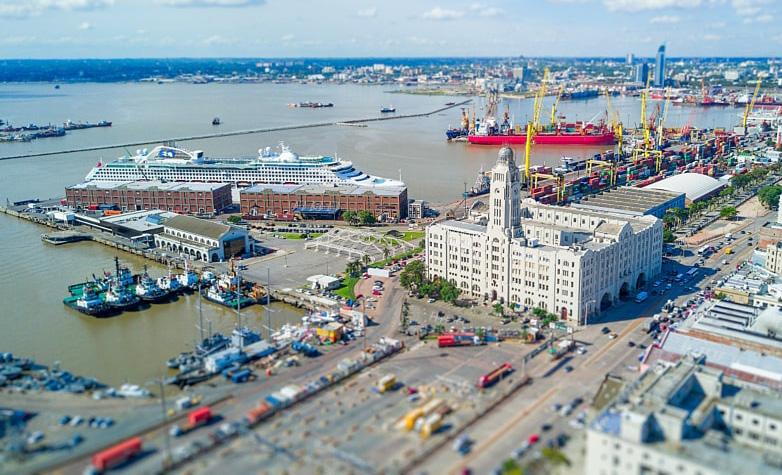
between 12,600 to 14,000TEU today, carriers, importers and exporters in the River Plate countries desperately need more capacity especially with the Argentine economy expected to pick up with the new right-wing, free enterprise government of Javier Milei (beginning in December 2023).
Hontou says that the investment cost rising from US$455M to US$600M is due to inflation, generally rising costs and the need to remove a large rock near the new quay extension.
ANP will pay for the channel to be eventually dredged down to 15 metres.
Three years ago KN signed an agreement with Lacalle’s government to extend its 30 year lease for another 50 years, so it will now expire in 2081.
In 2022, the port of Montevideo as a whole broke the 1M TEU barrier as it handled 1,070,000TEU. The previous record was 940,000TEU back in 2017, but a stagnant economy and Covid stymied increases since then.
In Montevideo KN currently operates seven Ship to Shore Gantry Cranes and can accommodate post panamax ships up to 22 containers wide.
TCP - from next year we will have two new berths, double from what we have today, and this will give us lots of options and flexibility ‘‘
“THE FUTURE IS OURS”
Ironically, back in 2021, KN was threatening legal action and a demand for more than US$1.3BN in damages against the Uruguayan government for allowing the alleged “unfair competition from Montecon in the public docks”. The Belgians argued that this was against the Treaty of Reciprocal Promotion and protection of Investments between Belgium/ Luxembourg and Uruguay. As a sop to TCP and to settle the dispute the government agreed to grant a 50-year concession extension (from 2031 up to 2081) as long as more than $455M was spent on infrastructure and equipment improvements.
But now relations are good with the government, and Presidential elections in October are not likely to cause any changes in this, according to several River Plate sources.
“Everything has been upside down along the ECSA over the past year and we have been trying to take up the slack but without the capacity,” concludes Hontou. “But, as from next July we will have the space for more. We believe the future is ours.”
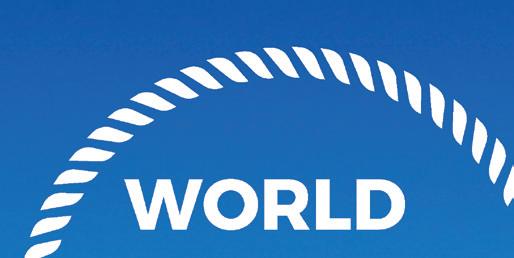




8 – 10 October 2024
Hamburg, Germany
Managing risk - building resilience - unlocking opportunities 2024 will be a pivotal year for ports and their communities. Geopolitical instability is on the rise. Physical and digital security is under threat, at sea and on shore.
Shipowners, supply chain providers and cargo owners must adapt rapidly. The energy transition towards low- and zero-carbon fuels must be balanced against national energy security concerns.
#IAPH2024 will offer attendees insights on these topics, revealing how ports – from developing and developed nations – are building secure and sustainable solutions to these shared challenges, in a deeply interconnected world.

To secure your delegate place or further information on attending/sponsoring contact the events team: visit: worldportsconference.com contact: +44 1329 825335 or email: wpc@mercatormedia.com






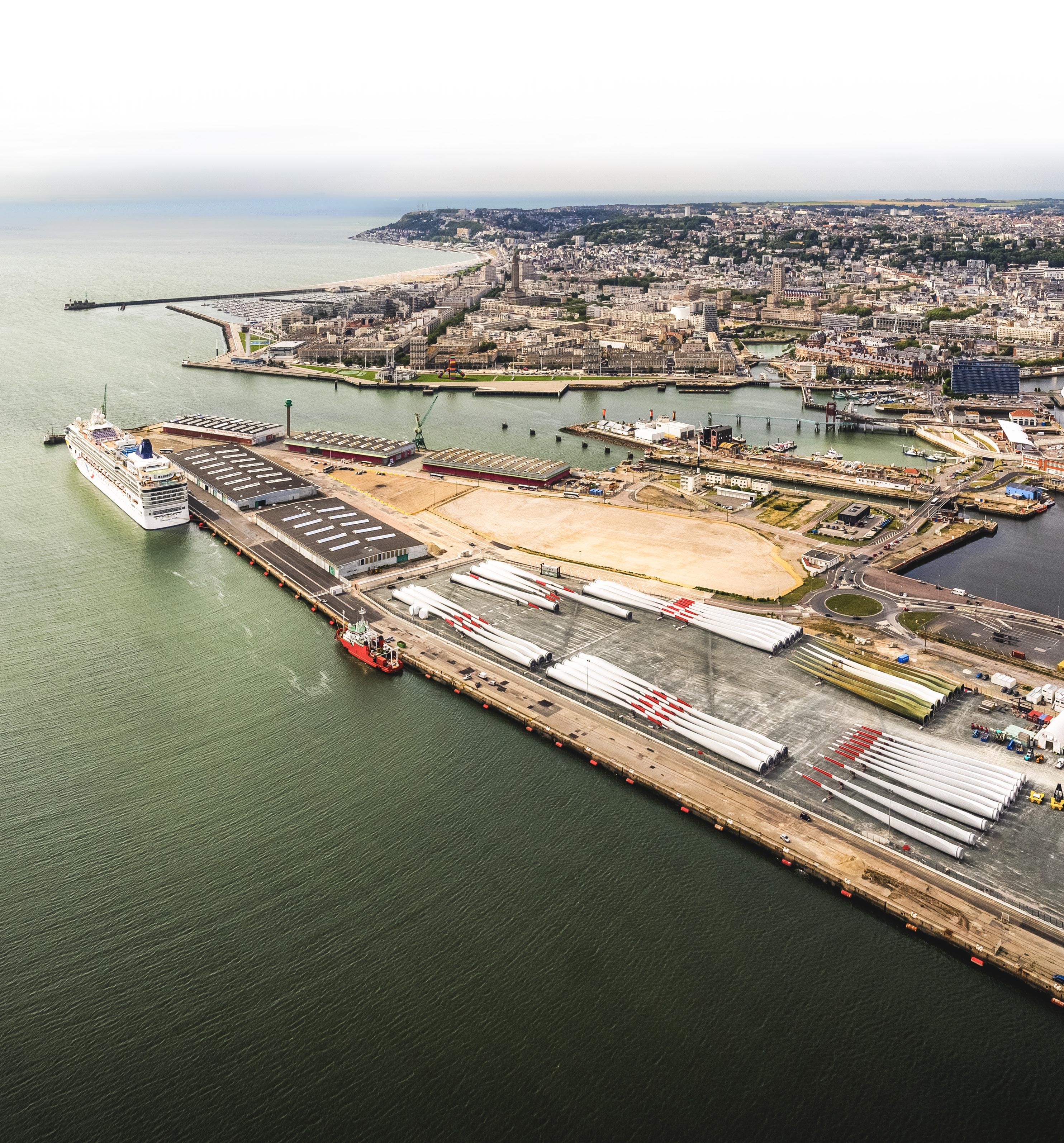
visit: greenport.com/congress tel: +44 1329 825 335 email: congress@greenport.com




Welcome Reception - Tuesday 22nd October 2024
18:30 Welcome Reception - Hosted by City of LeHavre
08:00 Coffee & Networking
09:30 Welcome by Chairman
Christopher Wooldridge, Science Coordinator EcoPorts EcoSLC
09:40 Welcome Address by HAROPA Port
Stephane Raison, Director General, HAROPA
Session 1.1: Building a sustainable future
Priorities & challenges for meeting net-zero
10:00 Panel Moderator: Chris Wooldridge, Science Coordinator EcoPorts EcoSLC, and Visiting Research Fellow, Cardiff University, UK
Panellists include:
Isabelle Ryckbost, Secretary General, ESPO
Antonis Michail, Technical Director IAPH & WPSP, IAPH
Lamia Kerdjoudj Secretary General, FEPORT
Stephane Raison, Director General, HAROPA Port
Nicolette van der Jagt, Director General, CLECAT
11:10 Coffee & Networking
Session 1.2: Electrification of Ports
Hear about the latest developments in the electrification of ports, cruise terminals and equipment.
11:30 Electrification of Ports, Cruise Terminals & Equipment Hervé Geraud, Onshore Power Supply Expert, HAROPA Port
11:45 Onshore Power Supply: The Business Case
EOPSA’s 2024 strategy focuses on the business case and bankability of OPS, converging energy, maritime, and port experts to create a versatile, financially viable model, featuring the Cherbourg Port Microgrid.
Roland Teixeira, President, EOPSA
12:00 Scaling customized shore power
Using standardized modules to create shore power solutions for ports world-wide Speaker to be confirmed, Powercon
12:30 Question & Answer Session
12:45 Lunch & Networking *invited

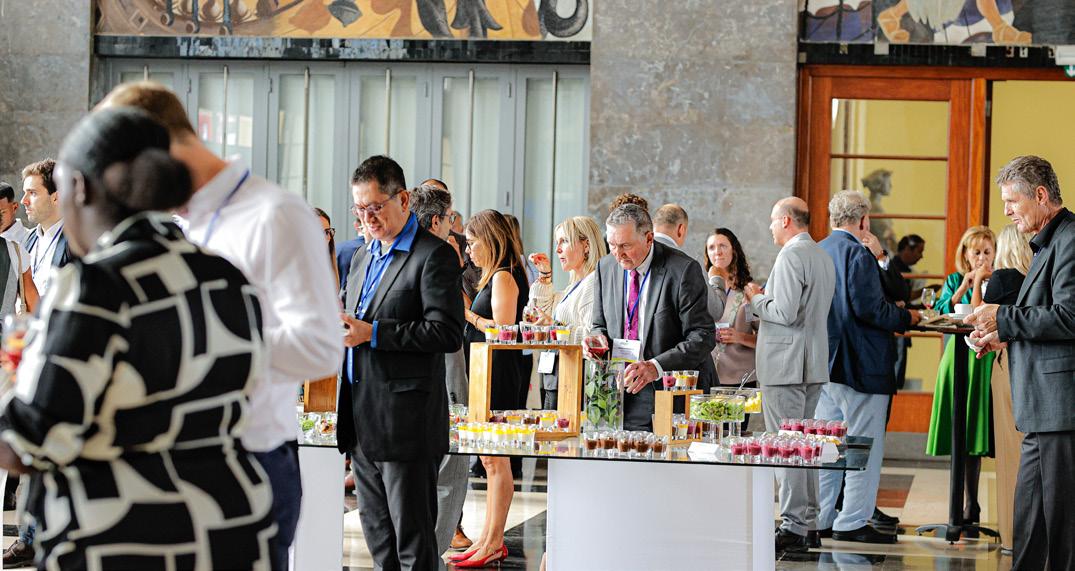
2.1 Green Corridors
An update on recent projects and developments on creating green corridors.
14:10 Green Corridors - update on recent developments and case studies
In 2023, the Port of Dover led a feasibility study for a Green Corridor with Calais/Dunkirk, focusing on energy pathways, regulations, grid upgrades, and universal charging infrastructure.
Megan Turner, Environment and Sustainability Manager, Port of Dover
14:25 Green Corridors – moving from promises to real action
A look into the rapid growth of global green corridor projects, highlighting the Port of Gothenburg’s pioneering biofuel and ammonia initiatives, emphasizing collaboration, challenges, and lessons in achieving sustainable shipping.
Edvard Molitor, Head of International Public Affairs and Sustainability, Port of Gothenburg
2.2 Decarbonising Cruising: Sustainability Investments & Projects
A chance to hear from experts on the latest sustainability investments and the work being done to tackle the environmental, social and economic impacts of cruise operations.
14:10 Future environmental solutions for Mediterranean ports. From European legislation to environmental strategic plans European directive and regulations about the environment and the concrete solutions of the mediterranean ports.
Valeria Mangiarotti, Marketing Manager, Port System Authority of the Sardinian Sea
14:25 Environmental Issues in Cruising in Morocco
Jamil Ouazzani, Director of Marketing & Strategic Intelligence, SGPTV SA (Tangier City Port Management Company)
15:10 Question & Answer Session 15:10 Question & Answer Session
15:30 Coffee & Networking
3.1 Resourcing the Transition to Sustainability
Are all ports equal? A look at seaports vs. inland enabling practicable implementation options for compliance, cost/risk reduction, environmental protection, and sustainability.
16:00 Resourcing the Transition to Sustainability
Cedric Verciglio, Strategic Planning Director, HAROPA Port
16:15 Port Readiness Level for Marine Fuels Assessment Tool
Antonis Michail, Technical Director IAPH & WPSP, IAPH
16:30 The Role of Megaports in Climate Change
EU mega ports prioritize climate change, adopting strategies like GHG reduction targets and On-shore Power Supply. The paper highlights implementation challenges, emphasizing stakeholder collaboration for sustainable port management and climate change adaptation.
Marti Puig Duran, Chemical Engineer & University Lecturer, Polytechnic University of Catalonia
16:45 Green Inland Ports – the way forward
Developing an Environmental and Sustainable Management System for greening Inland Ports
Rob Leeuw van Weenen, Senior Project Manager, Panteia Nederland
Ioanna Kourouniotti, Freight Transport and Ports Consultant, Panteia
17:00 Question & Answer Session
3.2 Cruise Infrastructure & Development
An update on the latest projects in cruise infrastructure and development.
Speakers to be confirmed
16:15
16:3
17:00 Question & Answer Session
Book
17:20 Day 1 Round Up with Chairman
17:30 Conference Close
19:30 Conference Dinner – Hosted by Haropa Port
DAY TWO - Thursday 24th October 2024
08:30 Coffee & Registration
09:20 Opening by Chairman
09:30 ESPO Environmental Report
ESPO will present the 9th Annual Environmental Report. The ESPO Environmental Report is part of EcoPorts, which is the environmental flagship initiative of European Ports. The Environmental Report provides ESPO and European policymakers with insights on the environmental issues that European ports are working on, and informs the initiatives taken by ESPO.
Anaëlle Boudry, Senior Policy Advisor, ESPO
09:55 ECO SLC Environmental Report
Marti Puig Duran, Chemical Engineer & University Lecturer, Polytechnic University of Catalonia
Christopher Wooldridge, Science Coordinator EcoPorts EcoSLC
10:20 Question & Answer Session
10:30 Coffee & Networking
4.1 Infrastructure Development for Multimodal Services
A look into the adaptations needed to meet decarbonisation goals and address ecological transitions for logistics and supply chains.
10:50 Infrastructure Development for Multimodal Services
Pierre de Bellabre, Multimodality Project Director, HAROPA Port
11:05 Port of Moerdijk: multimodal hub for Europe
Kyra Lemmens, Commercial Manager –Logistics, Port of Moerdijk
4.2 Financing Decarbonisation
A look at the latest initiatives to put the transition at the heart of port finance models.
10:50 Sustainable Finance Lisa Hubert, Investment Director: Sustainable Ocean Fund, Mirova
11:05 Tim Verhoeven, Projects & Policy Manager Sustainable Shipping, port of Antwerp-Bruges*
11:20 Sergio Nardini, Head of Strategic Development, Port of Triest* 11:20
11:35 Decarbonizing Container Logistics on the River Siene
The latest developments at Port Feeder Barge to decarbonize intra port container logistics
Ulrich Malchow, Managing Director, Port Feeder Barge 11:35
11:50 Questions & Answers 11:50 Questions & Answers
12:10 Lunch & Networking *invited
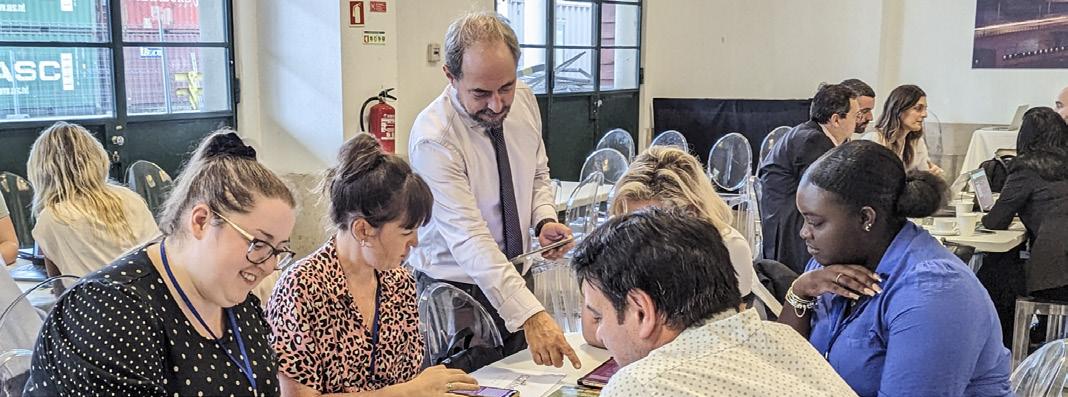

5.1 Successful Port Integration for Meeting Net-Zero
Equitable, international collaboration to benefit communities and the environment.
13:40 Loss of Biodiversity –An Underestimated Risk
Biodiversity is often overlooked in public and political spheres, overshadowed by climate change measures. Ports face challenges balancing economic development and biodiversity, risking severe ecological and economic impacts if biodiversity is neglected.
Malte Siegert, Chairman, NABU Hamburg
13:55 Confronting the Carbon Giant: Ports as Battlegrounds for Decarbonisation
Scope 3 emissions, transparency in emissions reporting, and community mobilization for environmental accountability, emphasizing ports’ roles in decarbonization and their impact on global supply chains and climate change efforts.
Sjoerd de Jager, CEO & Co-Founder, PortXchange
14.20 Activating APM Terminal’s NetZero strategy through local decarbonization roadmaps
14:10 Activating APM Terminal’s NetZero strategy through local decarbonization roadmaps
The project developed local decarbonization roadmaps for APM Terminals’ global net zero strategy across eight terminals in nine countries. The presentation covers outcomes and lessons learned from these efforts.
The project developed local decarbonization roadmaps for APM Terminals’ global net zero strategy across eight terminals in nine countries. The presentation covers outcomes and lessons learned from these efforts.
Andrea Wiholm, Director and Industrial PhD researcher, Decarbonisation Office APM Terminals
14.25 Poole Harbour Decarbonisation Plan
Andrea Wiholm, Director and Industrial PhD Researcher, Decarbonization Office APM Terminals.
This presentation outlines steps for ports and tenants to eliminate Scope 1, 2, and 3 emissions, addressing new regulations and compliance risks, and driving impactful change in the industry..
Deanna Cornell, Green and Smart Ports Consultant, RoyalHaskoningDHV
14:40 Question & Answer Session
15:00 Coffee & Networking
5.2 Green Fuel Transition for Ports
A review of the progress being made to meet the 2050 goals for decarbonisation and current projects in place.
13:40 Renewable energy – latest projects contributing to port growth
Kris Danaradjou, Deputy General Manager in Charge of Development, HAROPA Port
13:55 Climate Strategies in Baltic Ports
Baltic ports’ climate strategies, focusing on EU compliance, decarbonization, electrification, renewable energy, and ESG reporting, highlighting BPO’s role in multiport decarbonization projects and energy transitions.
Bogdan Ołdakowski, Secretary General, BPO
14:10 Hydrogen Fuel Cells as Onshore Power Supply Solution for Grid-Constrained Ports
Using hydrogen fuel cells for onshore power in ports, offering a sustainable alternative to overcome grid congestion and lack of infrastructure, aiding in decarbonization and sustainable practices.
Anis Ayoub, Stationary Power EMEA, PlugPower
14:25 Green fuel transition from a cross border perspective.
Biofuels in transition
Sophie Delannoy, Program Manager –Sustainable Transport Fuels, North Sea Port
14:40 Question & Answer Session
Session 6: The Role of Smart Ports & Technology
A look into which innovations will derive real benefits in the transition to sustainability; AI, Digitisation, Optimisation software
16:30 Question & Answer Session
16:50 Conference Wrap up by Conference Chairman
17:00 Conference Close
DAY THREE - PORT TOUR
Friday 25th October 2024
10:00 Port Tour of Le Havre
12:00 End of Conference *invited
GreenPort Congress & Cruise Combined
Delegate rate is EUR is €2,270.00
Price in GBP is £1,900.00 and includes:
n Choice of conference streams for GreenPort Cruise on day 1
n Two day conference attendance at GreenPort Congress
n Full documentation in electronic format
n Lunch and refreshments throughout n Place at the Welcome Reception (22nd October 2024)
n Place at the Gala Dinner (23rd October 2024)
n Place at the Port Tour (25th October 2024)
Click here to buy
**Alternatively, you can call us on +44 1329 825335
**Currency will default to GBP - Enter your country name to change the currency.
GreenPort Cruise - One Day
Delegate Rate is EUR is €1155.00
Price or GBP is £970.00 and includes:
n One day conference attendance
n Full documentation in electronic format
n Lunch and refreshments
n Place at the Welcome Reception (22nd October 2024)
n Place at the Conference Dinner (23rd October 2024)
Click here to buy**
Alternatively, you can call us on +44 1329 825335
**Currency will default to GBP - Enter your country name to change the currency.
Booking Online greenport.com/congress or complete and fax the booking form below to +44 1329 550192. On receipt of your registration, you will be sent confirmation of your delegate place
Contact Us
For further information on exhibiting, sponsoring,or attending the conference, contact the Events team on: +44 1329 825335 or congress@greenport.com
France 23 25
OCT 2024 Le
BOOK ONLINE OR COMPLETE THIS FORM AND FAX TO +44 1329 550192
Please tick all that apply :
(Please copy this form for additional delegates)
Please register me for GreenPort Cruise 2024 (1 day) Please register me for GreenPort Congress 2024 (2 days)
Welcome Reception (22nd Oct 2024) – No additional cost
Conference Dinner (23rd Oct 2024) – No additional cost Port tour (25th Oct 2024) - No additional cost
Members of supporting associations will receive a discount I am a member of
Family Name Country
First Name Telephone
Title Mr/Mrs/Ms/Dr/Other Fax
Company Email
Job Title Signature
Company Address
Company VAT No.
HOW TO PAY *UK registered companies will be charged the standard rate UK VAT
Bank Transfer: Mercator Media Ltd, HSBC Bank plc, EUR account, Sort Code: 40-12-76, Account number: 70235247 SWIFT/BIC8: HBUKGB4B BRANCH BIC11: HBUKGB41CM1 IBAN: GB35HBUK40127670235247
NB: Prepayment is required in full for entry to the conference. Cancellations are not permitted, however substitutions are allowed. Please fax form. Do not send by
Credit/Debit Card: Complete the form with your card details I have paid by bank transfer
Please charge my card (delete as appropriate) Mastercard/Visa/Amex
Card Number
Name on Card
Credit Card Billing Address
(3
Expiry Date
Security Code Signature







The short sea shipping and sustainable logistics network
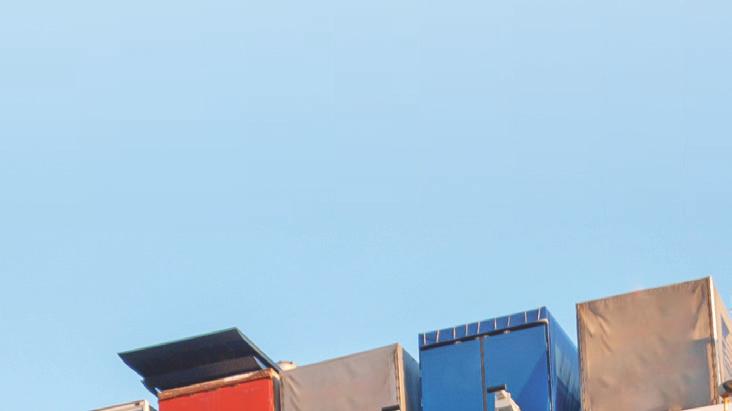

Delegate place includes
2-day conference attendance including lunch & refreshments
Technical Visit
Electronic documentation Conference Dinner (Premium Package) Presentation download (Premium Package)


Don’t miss Coastlink at the Port of Bilbao!



A multimodal port on the Atlantic Arc, Bilbao is a key gateway for European trade. Learn about the latest challenges and opportunities for short sea shipping; developments in multimodal connections to create sustainable freight routes; and the collaboration between ports & shipping to facilitate renewable energy hubs.

Supporters:


Coastlink is a neutral pan-European network dedicated to the promotion of short sea shipping and intermodal transport networks. Learn from and network with international attendees representing shipping lines, ports, logistics companies, terminal operators, cargo handlers, and freight organisations.
For more information on attending, sponsoring or speaking contact the events team: visit: coastlink.co.uk contact: +44 1329 825335 or email: info@coastlink.co.uk

On 27th March, the Singapore-flagged container vessel – DALI – collided with Baltimore’s Francis Scott Key Bridge, causing its collapse into the Patapsco River.
Captain Steve Bomgardner, Vice President – Shipping & Offshore, Pole Star Global charts the impact on maritime trade and vessel traffic
At the time of the DALI’s collision with the Baltimore’s Francis Scott Bridge the vessel was carrying 4699TEU from East Asia to the US East Coast via the Panama Canal. The ship arrived at Baltimore’s Seagirt Marine Terminal on Tuesday, March 24th, following a delivery to the Port of New York/New Jersey. A small portion of containers was offloaded. Then the DALI departed Seagirt Marine Terminal at around 00:24 local time on Tuesday, bound for Colombo, Sri Lanka. What follows is a timeline of events:
● At 01:24, as the ship approached the bridge, the vessel experienced a loss of power, causing the lights to go out onboard.
● At 01:25, the lights came back on as smoke emanated from the ship’s funnel.
● At 01:26, the DALI changed course but appeared to lose power again.
● The critical moment occurred at 01:28 when the ship collided with a pillar of Baltimore’s bridge, causing the central and southern spans to collapse upon impact.
● Shortly after, at 01:28, the northern span of the bridge also collapsed, causing complete destruction.
It has been reported that the vessel suffered catastrophic electrical failures minutes before the crash, and experienced two blackouts a day earlier, according to a preliminary report released by the National Transportation Safety Board (NTSB). Reviewing DALI’s history, this isn’t the first time it has experienced an accident. In 2016, while departing from the Belgian port of Antwerp, the ship grazed its stern against the quay, causing significant damage to the hull. Fortunately, there were no injuries or spills reported.
The DALI’s collision with Baltimore’s bridge is the latest in a series of incidents that underscore the vulnerability of maritime supply chains ‘‘
Yet, these past issues cannot be used to assign blame today. Instead, they should be put into perspective against the wider picture. When considering DALI’s overall track record using marine intelligence technology from Pole Star Global, only two recorded deficiencies have been reported in approximately eight years, alongside 27 Port State Control (PSC) inspections. This performance is generally commendable and worth noting.
MARITIME TRADE IMPACT
Baltimore’s Francis Scott Bridge links Hawkins Point - a neighbourhood in Baltimore - to Dundalk - in Marylandwhile allowing commercial vessels to traverse the Patapsco River, which links the Port of Baltimore with Chesapeake Bay - the largest estuary in the United States. Therefore, the port of Baltimore stands out as one of the busiest in the United

States, by cargo volume and value. According to the IMF’s Port Watch, “Baltimore handles nearly 3% of US maritime trade, serving as a major port for the import and export of motorised vehicles.” With that in mind, this crisis has significant implications for wider global supply chains.
Pole Star Global data reveals that from January 2023 –March 2024 there was an array of commercial vessels calling at Baltimore. This includes: dry bulk; chemical container, general cargo, oil, other dry cargo, passenger, and selfdischarging bulk dry vessels – with car carrier, container and dry bulk vessels accounting for the greater number of calls. This data excludes tugboats, non-merchant vessels, and other non-commercial vessel types.
This aligns with Bureau of Transportation Statistics data about the port’s commodity exports and imports. It reveals the top five commodities exported via Baltimore in 2022 by value were: motorised vehicles (37.1%), coal (16.6%), machinery (11%), natural gas and other fossil products (10.3%), and transport equipment (5.3%). The top five commodities imported in 2022 by value consisted of: motorised vehicles (45.9%), machinery (14.1%), base metals (9.8%), other foodstuffs (2.8%), and basic chemicals (2.8%). These industries bore the brunt of the incident – with automotive, oil and gas, and heavy industries most affected. Further, Baltimore’s export and import value is the largest to and from Europe – and it is expected that this incident will mostly affect the automotive, container, coal, and bulk dry shipping sectors.
Overall, the DALI’s collision with Baltimore’s bridge underscores the vulnerabilities in maritime infrastructure, impacting crucial trade routes and global supply chains. This vulnerability has recently gained prominence through other high profile incidents such as the blockage of the Suez Canal by the Ever Given and the current hostile situation in the Red Sea which has seen a large number of vessel operators elect to use the Cape of Good Hope route instead.
The Indian logistics sector has been undergoing a much-needed transformation with strong emphasis placed on the development of dedicated rail freight corridors, in order to alleviate chronic road congestion. AJ Keyes assesses progress

Indian Railways want to undertake a journey of transformation that will see dedicated freight corridors (DFCs) revolutionise the movement of goods and high speed rail (HSR) networks speeding up passenger travel.
The government of India maintains that DFCs will enable the reduction of high logistics costs in the country that are currently estimated to be twice as high as accepted global benchmarks.
The development of DFCs is needed to enhance the railway’s capacity and capability to carry freight traffic and increase the modal share of the railways in the country’s total freight mix from the current 26 per cent to 45 per cent.
At the same time, each kilometre-long freight train on the DFC will replace an estimated 72 trucks, thereby easing congestion of the highly overcrowded roads that are already responsible for transporting 60 per cent of total Indian freight cargo.
So, what is being planned and what does it mean?
According to Dedicated Freight Corridor Corporation of India Ltd (DFCCIL), which is a Government of India (Ministry of Railways) enterprise and responsible for the construction of a dedicated network of broad gauge railway lines exclusively for freight trains, there are two corridors under implementation. These are the eastern DFC (EDFC), which has already been commissioned, and the western DFC (WDFC) which is slated for completion in 2024. Figure 1 provides an outline.
Executing these two corridors will see a total rail length of 2843km generated. The EDFC spans 1337 km, stretching from Ludhiana in Punjab to Sonnagar in Bihar, while the WDFC is 1506 km long, extending from Dadri in Uttar Pradesh to the Jawaharlal Nehru Port Trust (JNPT) in Mumbai.
The focus of these corridors is to link the Golden
Quadrilateral route, which connects the four metropolitan cities of Delhi, Mumbai, Chennai and Howrah and its two diagonals (Delhi-Chennai and Mumbai-Howrah). This route is highly utilised and carries more than 58% of the revenueearning freight traffic of Indian Railways.
As Figure 2 from DFCCIL confirms, Indian railways have been losing share in freight traffic over the long-term, from 88% in 1950-51 to 26% in 2021-22. Add to the mix that the national highways along these corridors currently comprise 0.5% of the available capacity but carry almost 40% of the road freight, then the use of rail is falling at a time when it needs to be increasing. Currently, as noted previously, roads carry 60% of national annual freight volumes.
However, the tide may be turning if 2023-24 information is considered. A total of 55,079 trains ran on the EDFC and WDFC, hauling over 70,285 million gross tonne km and 38,555 million net tonne km of freight, but demonstrating an increase of 192.1% and 213.22%, respectively, compared to the previous year.
The 1337-km EDFC enables freight trains to run at top speeds of 60-70 km per hour, a significant improvement over historic train speeds of just 25-30 km per hour – though these speeds must be maintained consistently for all services to ensure efficiencies, of course.
DFCCIL offers a summary of this position: “The surging domestic economy, booming infrastructure construction and growing international trade led to the conception of the Dedicated Freight Corridors along the Eastern and Western arms of Golden Quadrilateral.”
The DFCs in India are engineered differently from existing
Source: DFCCIL
rail tracks, with an ability to handle longer and heavier trains. The average speed of these trains is around 65km per hour, powered by 2×25 kV electric traction and equipped with automatic signalling.
The EDFC, excluding the Sonnagar-Andal section, is already complete and has been fully operational since November 1, 2023. The Sonnagar-Andal section, which was originally planned to be developed in public-private partnership (PPP) mode, was abandoned and has now been taken over by the Ministry of Railways to be developed in engineering, procurement and construction mode (for both passenger and freight traffic).
For the WDFC, construction work on 1220 km out of the total 1506 km has been completed. The project has achieved financial progress of 92 per cent. Work on the PalanpurMakarpura and Sachin-Vaitarna sections, and the VaitarnaJNPT section, are all slated for completion by December 2024.
So on the basis that there is pent-up demand, and the construction is well underway and proceeding on time, what does all of this actually mean for the movement of freight in India?
Well, the desire for quicker and reliable rail transportation offered by the DFCs is going to be beneficial for critical sectors such as power and heavy manufacturing in the northern and eastern states of the country. For example, since commencing operations the EDFC has reduced the time it takes to transport coal from eastern India to power plants in northern India by a reported 30-40%. As a result, there have been fewer blackouts due to coal shortages and reduced inventory costs for power plants.
DFCCIL has confirmed that there are other new corridors being proposed, which include the East-Coast Corridor spanning 1080km from Kharagpur to Vijayawada in West Bengal, Odisha and Andhra Pradesh; the 1738km East-West Corridor from Bhusaval to Dankuni traversing West Bengal, Jharkhand, Odisha, Chhattisgarh and Maharashtra; and the 890km North-South Corridor Itarsi-Nagpur-Vijayawada route across Madhya Pradesh, Maharashtra, Telangana and Andhra Pradesh. Detailed project reports (DPRs) for these initiatives are currently being prepared, but it seems that it is a strategy that will continue.
Yet while it seems that progress is being made with the network, the same is not necessarily true with the country’s major operator. The proposed and long-running disinvestment of railway public sector firm Container Corporation of India (CONCOR) looks set to stay in the slow lane for some time yet.
The Cabinet Committee of Economic Affairs (CCEA) approved the government’s 30.8% equity stake sale in CONCOR in November 2019, followed by agreeing to a policy of long-term leasing of rail land in September 2022.
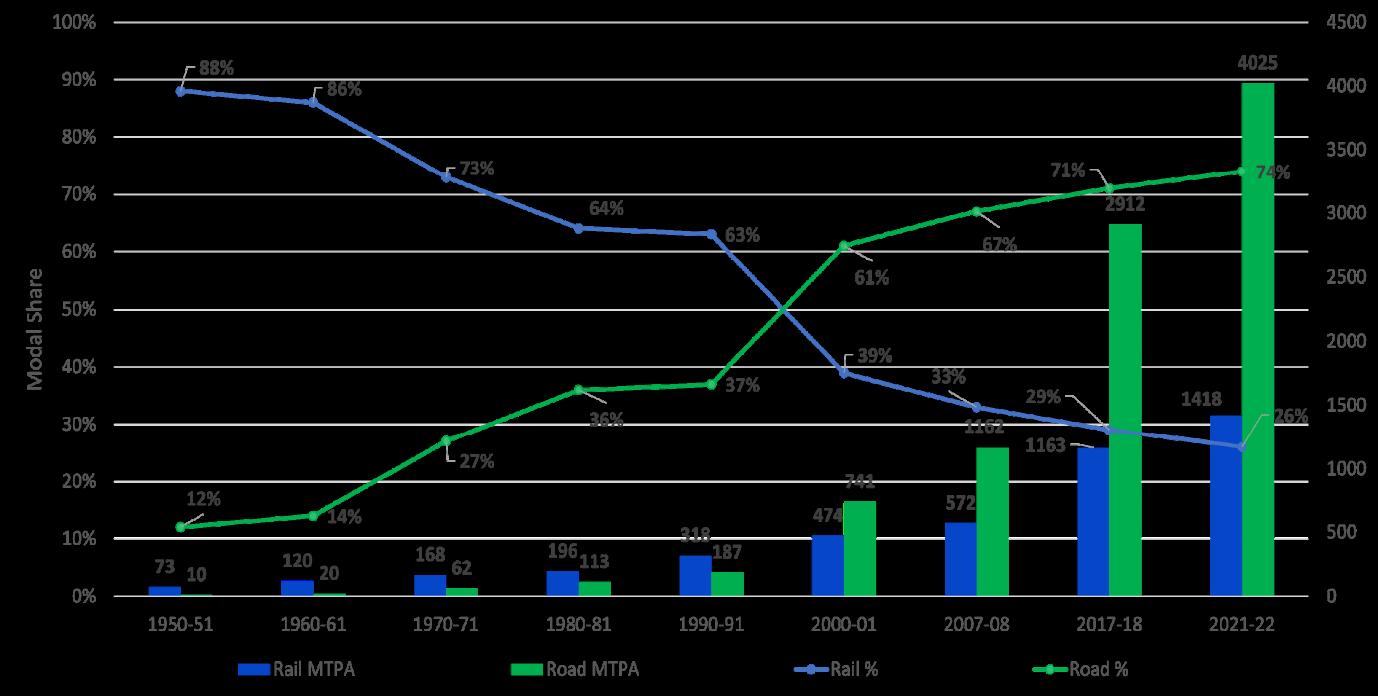
Source: DFCCIL
The DFCs in India are engineered di6erently from existing rail tracks, with an ability to handle longer and heavier trains. The average speed of these trains is around 65km per hour, powered by 2×25 kV electric traction and equipped with automatic signalling
The EDFC, excluding the Sonnagar-Andal section, is already complete and has been fully operational since November 1, 2023. The Sonnagar-Andal section, which was originally planned to be developed in public-private partnership (PPP) mode, was abandoned and has now been taken over by the Ministry of Railways to be developed in engineering, procurement and construction mode (for both passenger and freight tra6ic)
However, it remains business as usual for the rail operator, as Sanjay Swarup, Chairman and Managing Director, CONCOR, explained at the end of Q4 2023 when asked about the sale process: “That is the policy of Government of India. So whatever policy is given by them, we will follow that policy. We cannot comment on that… But having said that, we are doing normal business. We are expanding our terminals. We are expanding our customer base. And we are giving more and more—introducing more and more services for our customers. And so that the existing customers stay with us, new customers join us… The business is not stopping. As and when it comes, we’ll obey the orders of government.”
For the WDFC, construction work on 1220 km out of the total 1506 km has been completed. The project has achieved financial progress of 92 per cent. Work on the Palanpur-Makarpura and Sachin-Vaitarna sections, and the Vaitarna-JNPT section, are all slated for completion by December 2024.
Clearly, progress with this transaction is slow and realistically CONCOR is expecting to continue with its current operating strategy………and for what is an unknown timeline.
So on the basis that there is pent-up demand, and the construction is well underway and proceeding on time, what does all of this actually mean for the movement of freight in India?
Dedicated Freight Corridors for rail are a path to alleviating chronic road congestion and are vital in complementing economic objectives ‘‘
Well, the desire for quicker and reliable rail transportation o6ered by the DFCs is going to be beneficial for critical sectors such as power and heavy manufacturing in the northern and eastern states of the country. For example, since commencing operations the EDFC has reduced the time it takes to transport coal from eastern India to power plants in northern India by a reported 30-40% As a result, there have been fewer blackouts due to coal shortages and reduced inventory costs for power plants.
DFCCIL has confirmed that there are other new corridors being proposed, which include the East-Coast Corridor spanning 1080km from Kharagpur to Vijayawada in West Bengal, Odisha and Andhra Pradesh; the 1738km East-West Corridor from Bhusaval to Dankuni traversing West Bengal, Jharkhand, Odisha, Chhattisgarh and Maharashtra; and the 890km North-South Corridor Itarsi-Nagpur-Vijayawada route across Madhya Pradesh, Maharashtra, Telangana and
Long-term, DFCs in India will help lower the high logistics costs and reduce dependence on transporting freight through highways. Each km-long train on the EDFC can replace 72 freight trucks on roads, which reduces fossil fuel consumption and decreases the country’s carbon footprint. Add to the mix supporting the development of multimodal logistics parks and keeping pace with growing port capacity, the transformation of the railways in India cannot come soon enough. The role of CONCOR in India looks set to remain unchanged though, at least for the time being.
The Ministry of Road Transport and Highways (MoRTH) has reported only 1288 km of highways were constructed until May 2024, owing to excessive heat, a 12.1% decline from the 1465 km constructed during the same period in 2023.
According to the Ministry, because of the
imposition of the model code of conduct, the government did not award any project during the period. Only one project of 4 km was approved by the Election Commission of India, compared to 382 km noted during the same period last year.
Capital expenditure for the period reached
Rs 579.25 billion, accounting for 42.5% of the capital outlay under the vote-on-account provision for the first five months of 2024-25. Even with the new rail corridors, high use of roads for freight activities will continue. The requirement for ongoing investment is definitely needed in tandem.
A new decarbonisation survey finds progress has been made in US ports but there is a need for further study of the options and technology available. Panos Koutsourakis, VP Global Sustainability, ABS, elaborates

While the maritime industry has focused squarely on emissions from ocean-going vessels relatively less attention has been given to port emissions. These emissions are difficult to measure, in part because ports’ emissions come from sources often outside of the direct control of the port, including vessels, rail and trucks.
A new report aims to provide a concise and insightful update on the port decarbonisation landscape. It considers trends and lessons learned that will help port management, terminal operators, vessel operators, community stakeholders, policymakers and others work together toward maritime decarbonisation targets.
A unique collaboration between the American Association of Port Authorities (AAPA) and the American Bureau of Shipping (ABS) provides an opportunity to blend perspectives from practitioners in both port authorities and vessel operations. An advisory group of 15, including AAPA members, ABS personnel and industry, was formed to support the project in reviewing the survey questions, draft and final report.
A central goal of the analysis was to provide a snapshot of current trends and near-term goals. While much work has been and needs to be done on long-term plans and strategies for port decarbonisation, this report is focused on the here and now. What is working, what is not and what can the maritime industry learn from projects and planning efforts currently underway at America’s ports?
The survey uncovered broad challenges in the port
decarbonisation landscape. In particular, transmission lines and charging infrastructure are being built at too slow a pace. Public funding is far too low to achieve advocates’ and ports’ decarbonisation goals. Technologies are not yet developed enough to allow one for one replacement of traditionally powered equipment.
In both written responses and in interviews, this report also uncovered tremendous opportunity in the port decarbonisation landscape. Even with the absence of strict regulation, ports are finding ways to work with their public and private stakeholders to build out new decarbonisation projects.
New models of electric, hydrogen, biofuel and other alternatively-powered equipment are being deployed across the country. Through these deployments, ports are moving cargo and passengers, powering vessels and mitigating emissions. Not only are these projects supporting the American economy and having positive environmental impacts, but they are also working out the kinks in new classes of equipment that have never been used before. With each new generation of equipment, manufacturers are improving energy efficiency, horsepower, range and more.
Ports’ private terminal operator partners are working tirelessly to procure and implement these technologies, and the public sector has made so much of this progress possible
■ Standardisation of shore power requirements for many types of vessels with LV or HV systems is still in progress and a key area of challenge brought up in the survey
by making billions of dollars in funding available. The public sector also has a regulatory role to play, and our survey reveals that the federal and state governments should approach heavy-handed regulation with caution.
There are currently no federal government regulations specifically requiring port decarbonisation. As a result, the landscape across the port industry is uneven, with decarbonisation progress at specific ports largely driven by state and local regulation, customer demand and community pressure.
Action is often taken at the local level, with local governments with jurisdiction over port authorities setting decarbonisation goals. Perhaps the most prominent example is the South Coast Air Quality Management District (SCAQMD), which has jurisdiction over air emissions in several Southern California counties. SCAQMD has proposed an indirect source rule (ISR), which would require the Ports of Los Angeles and Long Beach to mitigate criteria pollutants significantly.
The California Air Resources Board (CARB) has also set several emissions standards to require vessels connect to shore power at berth, require harbour craft to mitigate emissions, and require the trucking industry to shift towards zero-emissions. While technologies and programmes to mitigate criteria pollutants and GHG differ, the result is often the same: implementation of zero-emission equipment. However, hybrid equipment can in many cases reach decarbonisation and criteria pollutant mitigation goals in far shorter timelines than zero emission equipment.
Cold Ironing, also known as Alternative Maritime Power (AMP), or more commonly shore power, consists of connecting vessels to shoreside power sources, thereby allowing electricity to flow from the port into ships.
Many ports are seeing a greater demand from vessel operators to support shore power connections.
Shore power connections found in U.S. ports generally fall under types: high voltage system (over 1kV, AC) and low voltage systems (<1kV, AC). High voltage shore power systems support large vessels with high power demand such as cruise, containers, refrigerated vessels, etc. with 6.6kV or 11kV power systems. Low voltage shore power supports vessels with low voltage distribution system between 220 and 480V and lower power demand like fishing vessels, tugs, and offshore supply service and working ships.
Standardisation of shore power requirements for many types of vessels with LV and HV systems is still in progress and a challenge brought up in our survey question four. The need for standardisation of DC shore power connection systems to support all-electric vessels is also rising steadily.
The following table provides a summary of available standards for HV and LV shore connections. Shore power installations are very expensive and require upgrades to the port and grid infrastructure.
Public private partnerships and government grants play a crucial role. According to ports in our interviews, shore power systems can cost US$25 million per berth and US$1 million per vessel to be shore power compatible.
For ports with small budgets, infrequent calls from shore power-compatible ships, or frequent calls from bulk vessels, shore power systems may not be a cost-effective investment.
It is crucial that ports involve the utility companies from the initial planning stage to ensure that shore power systems can be supplied without interruptions and the infrastructure is designed to consider future power demand. Design should
need for standardisation of DC shore power connection systems to support
vessels is also rising steadily.
The following table provides a summary of available standards for HV and LV shore connections. Shore power installations are very expensive and require upgrades to the port and grid infrastructure.
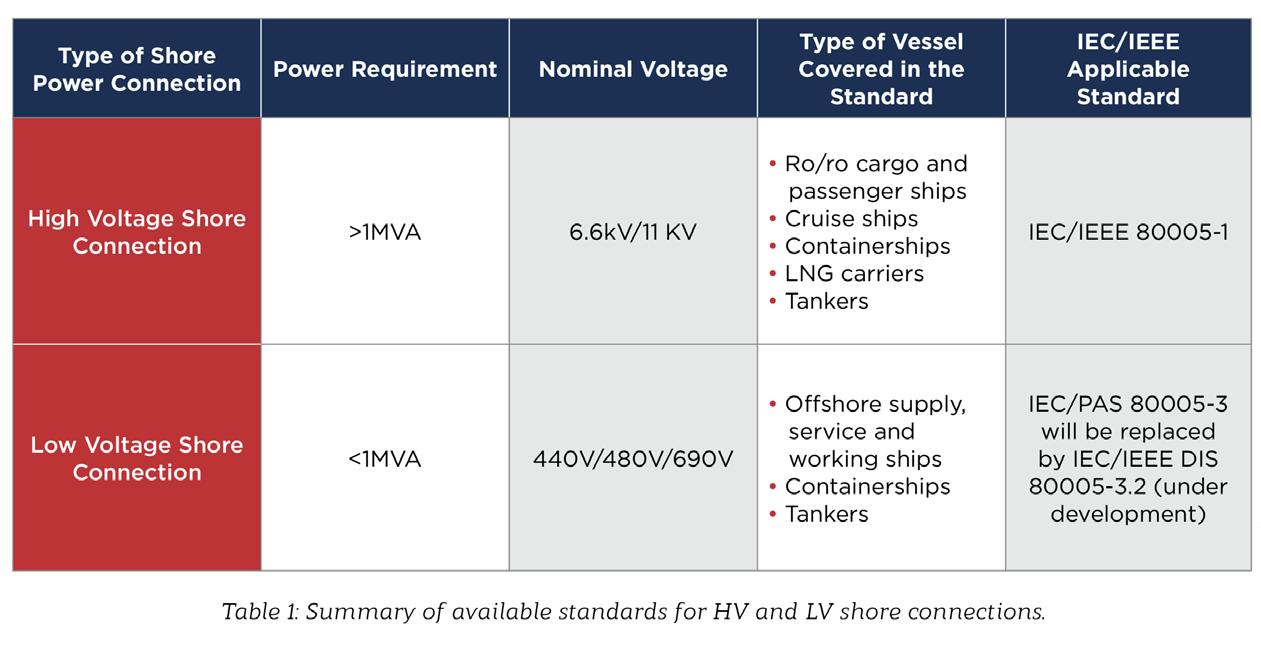
also consider the use of mobile cable positioning devices to ease connection.
of available standards for HV and LV shore connections
Public private partnerships and government grants play a crucial role. According to ports in our interviews, shore power systems can cost US$25 million per berth and US$1 million per vessel to be shore power compatible.
For ports with small budgets, infrequent calls from shore power-compatible ships, or frequent calls from bulk vessels, shore power systems may not be a cost-effective investment.
It is crucial that ports involve the utility companies from the initial planning stage to ensure that shore power systems can be supplied without interruptions and the infrastructure is designed to consider future power demand. Design should also consider the use of mobile cable positioning devices to ease connection.
The survey results show that, while there is mixed interest, ports are investigating the installation of local power generation. Per the survey results, local renewable power sources generally support less than 10% of the total power needs of the port. Solar PV leads the list of ports’ preferred local energy source. Building roof tops and canopies over parking spaces can provide space for solar power generation. While ports play a pivotal role in the construction of offshore wind projects and the movement of onshore wind components, few seaports envision installation of wind power on port property. However, studies have indicated that wind energy can be efficiently applied to meet the power demands of ports.
The survey results show that, while there is mixed interest, ports are investigating the installation of local power generation. Per the survey results, local renewable power sources generally support less than 10% of the total power needs of the port. Solar PV
The survey uncovered broad challenges in the port decarbonisation landscape and alongside these great areas of opportunity ‘‘
Fuel cells are also being investigated by many ports to support local power generation. By incorporating low/zeroemission energy sources and battery storage systems, ports are building micro grids that can support charging of electrical cargo handling equipment, vehicles and improve energy resilience.
The report also shows the need for future study. Among questions that this report did not address, but would be valuable to have answered include how has the performance of low- and zero-emission equipment improved over time and in different conditions, including range, charging time and duty cycles?
What is the total cost of ownership of various types of equipment, and can low- and zero-emission equipment save money over diesel in the long run? What is the economic benefit of port decarbonisation, including energy savings, cargo-throughput and local health cost savings?
Through further standardisation and economies of scale, can the cost of low- and zero-emission equipment be reduced? Can the cost of charging and fueling port equipment be brought down through greater efficiency in transmission infrastructure build out? Would the availability of alternative fuels at American ports confer a global economic competitiveness?
Lisa Barbieri*, Simulations Vice President of Marketing and Strategic Partnerships, CM Labs, charts the expanding role of simulation in operator training and hails its power boost when formatted in an Intelligent Training System

Extreme prices, weather events, tightening regulations, labour shortages — the challenges that today’s ports encounter are ever-increasing. To say that the last few years have been marked by instability would be something of an understatement. And yet that instability, by all accounts, is very much here to stay. There will be future natural disasters and accidents. There will be new regulations and security risks. To remain competitive, ports must focus on strategies that make them resilient and competitive in the face of instability.
For many, that means taking a closer look at workforce development. After all, an operator who can improve their cycle time from 19 to 24 moves per hour can complete more than 100 additional moves per week. That calculation, multiplied over the span of a year, a career, or an entire workforce, equals significant increases in berth and terminal productivity, cost savings, and decarbonisation. In addition, the concentrated practice that led to operational improvements also contributes to incident reduction—potentially saving lives.
But while everyone is talking about the importance of workforce development, it’s worth considering if they’re thinking about it in the right way and investigating the right approach. As Maksim Mihic, Global Executive Vice President, Operations & Engineering at DP World recently concluded at the Terminal Operations Conference (TOC), the ability to learn and unlearn is crucial in today’s ever-changing environment. It’s not just about improving cycle times, but about having the ability to quickly train your workforce for whatever new priorities or challenges they may encounter.
It’s worth asking the question: What is the best approach to workforce development? Because the answer points to a solution that can have profound consequences for ports worldwide. Currently, there are billions in lost savings and potential being wasted all over the planet.
Organisations currently training operators using a combination of theory and practice on real equipment know
all too well that it’s a notoriously difficult, dangerous, and time-consuming process. Adjusting training schedules to accommodate berth availability frequently extends the overall training timeline, sometimes even doubling it. Meanwhile, having inexperienced operators working with real equipment slows productivity and increases the risk of an accident. Compound these problems with other issues such as the fuel and maintenance costs that come from training on real equipment, and there’s significant potential for improvement.
What is the solution that addresses all these challenges at once? Let’s start by looking at the first step: simulation.
Simulation has been around for some time. Within the ports and maritime industry, simulation-based training tools began appearing in the early 2000s. As a result, the data on its benefits is clear and well-documented.
At ZHD Stevedores, for example, simulation-based training significantly reduced cycle times at the independent, familyrun company operating at several port terminals in the Netherlands. Simulation allowed operators to practice moves over and over again in a short timeframe and objectively examine their progress, strengths, and weaknesses. As a result, those operators were able to improve dramatically. The team went from taking 40–60 minutes to move 550 tonnes of bulk material to reducing that time to 20–30 minutes—effectively halving cycle times.
Meanwhile, at the Port of Halifax, Canada, simulation allowed its training partner, the Halifax Employers Association (HEA), to standardise training times. According to Robert Bonnar, HEA Training Advisor: “When we didn’t have a simulator, we had to schedule the start of training on days when the vessel was not in the port. So, we were at the mercy of the shipping schedules.” Bonnar noted that a 14-day training course could sometimes take a month to complete “just because we had to wait for a vessel to become available.” He notes that with the help of simulation training tools,
■ An Intelligent Training System enables multiple simulators to be run, updated, monitored, and managed from one central and secure hub – CM labs has developed Intellia, an Intelligent Training System for simulationbased workforce and training development
An Intelligent Training System represents a major breakthrough in the deployment of simulation as a training tool
“Today, a 14-day training course actually takes closer to 14 consecutive days.”
These quantitative benefits are supplemented by qualitative ones. At the Port of Tilbury (London), for example, simulation has helped boost recruitment. “The military are fascinated by what we were doing with simulation,” said Simon Harper, Learning & Development Manager and Director at Tilbury on Thames Trust, “It attracts veterans to our programmes, and it’s a remarkably effective tool for recruitment.”
Using simulation for training helps improve productivity, reduce fuel consumption, boost recruitment, standardise training times, and enhance safety. But while simulation training poses a distinct step beyond traditional training approaches, there’s another technological leap taking place that is carrying training initiatives even further. This brings us to the next step: utilising an Intelligent Training System.
The next evolution of simulation training is an Intelligent Training System. What is an Intelligent Training System? It’s a system that centralises, enhances, and simplifies the management of simulation training programmes, allowing for a variety of benefits, including the ability to scale to accommodate more users while also personalising training sessions for individual learning curves. It turns an approach that used to see one trainee on one simulator being supervised by one instructor into a system where multiple simulators can be added, updated, monitored, and managed from one central and secure hub. It’s a breakthrough that is redefining the way organisations deliver, manage, and experience training, making the process not only more effective but also significantly more efficient.
With an Intelligent Training System, data collected from the simulator can also be leveraged by ports for strategic decision-making. “Simulation technology is at a point where we can take the tremendous amount of data the simulator generates—think trainee performance, physics data, and machine behaviour, and use it to enhance a port’s operations,” says Alan Limoges, Manager of Product Growth & Partnerships at CM Labs, “With an Intelligent Training System, ports can process this data and deliver insights to trainees and instructors to help them better understand where they are struggling or need improvement, for example.”
Central to an Intelligent Training System is a future-ready and user-friendly design, which allows seamless access to functionalities and updates across multiple simulators.
Every level of port operations stands to benefit from an Intelligent Training System.
Administrators benefit from advanced data gathering and reporting, allowing them to see the results of substantially reduced fuel, equipment, and maintenance costs incurred from training.
Recruiters can also use that same system to attract and identify promising employees, as well as filter experienced applicants by testing their skills and making educated decisions rooted in objective data. And integrating the
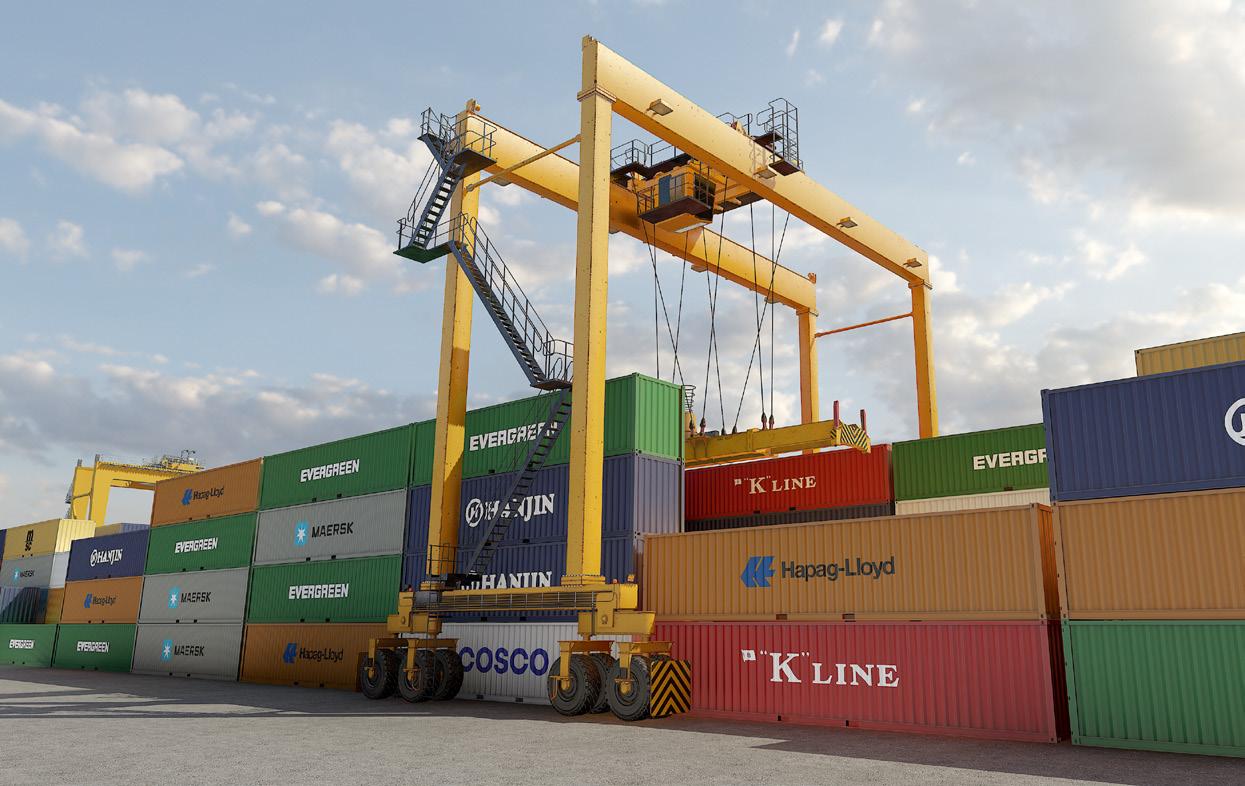
solution to a learning management system (LMS) would support an IT administrator’s job as well.
For instructors, the benefits are numerous. Objective scoring allows for easy evaluation of an operator’s strengths and weaknesses. And the ability to set custom learning paths allows for additional support in lesson planning. A single trainer can instruct and supervise multiple trainees simultaneously from one station or portable tablet, making training initiatives more efficient and effective.
Trainees themselves benefit from an Intelligent Training System in many ways, as it allows them to establish a learning path throughout their careers. Young trainees just beginning their training gain a smoother transition into their chosen field, while established operators gain easy access to the recertification training and upskilling they need for professional growth through custom learning paths that can be completed at their own pace. Improved safety cultures keep operators safe and satisfied with their workplace (in fact, almost half of American workers would consider a pay cut if their new employer had a stellar safety culture). And better preparation for high-risk and unexpected scenarios boosts confidence and reduces stress.
An Intelligent Training System turns simulation training into more than just a faster training method that improves productivity, assists decarbonisation, reduces training costs, and lowers the likelihood of a safety incident. With an Intelligent Training System, training becomes an organisational strategic asset that is scalable and future-proof.
San Vicente Terminal Internacional (SVTI) is about to become the first port in Chile to use an Intelligent Training System. “When we started this journey last year, we were looking at options in the market that could level up our training program and differentiate our operations from others within the industry,” said Daniela Cárdenas, HRBP at SVTI. “Now we’re talking about learning paths and long-term future training development in our terminals.”
*Lisa Barbieri is an accomplished professional and a driving force in the realm of heavy equipment simulation software and training technology. Lisa is responsible for developing the strategies, communications, and pipeline, as well as the product direction for CM Labs Simulations, a pioneering company renowned for its cutting-edge simulation training solutions. CM Labs has developed Intellia, an Intelligent Training System for simulation-based workforce training and development.
■ Simulation removes a considerable amount of risk and expense associated with the use of real equipment for operator training






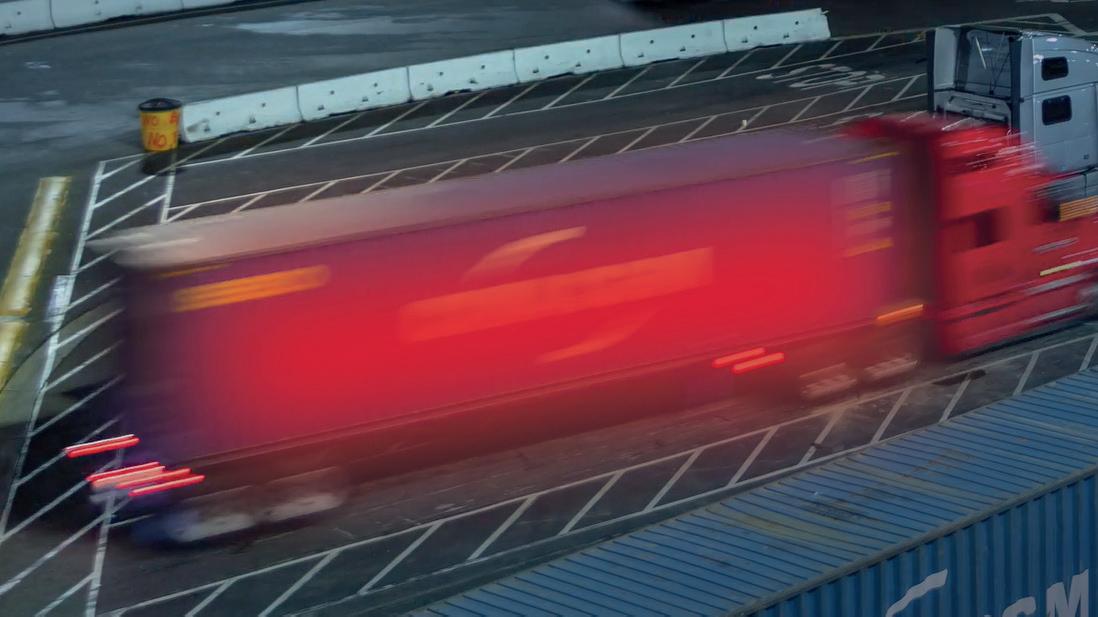
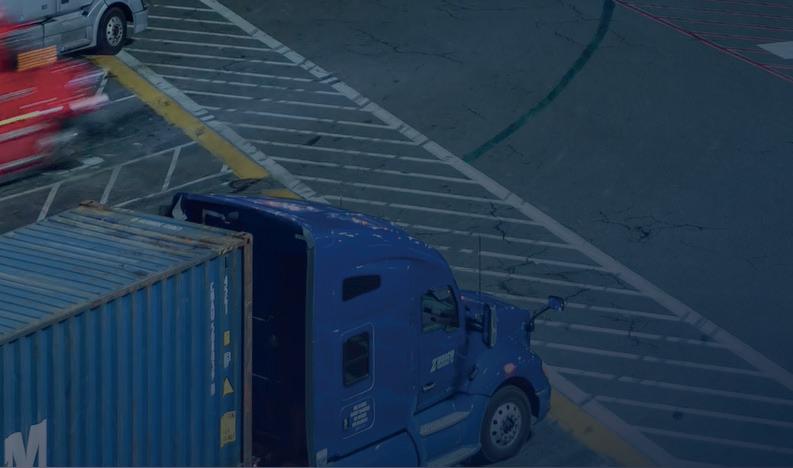



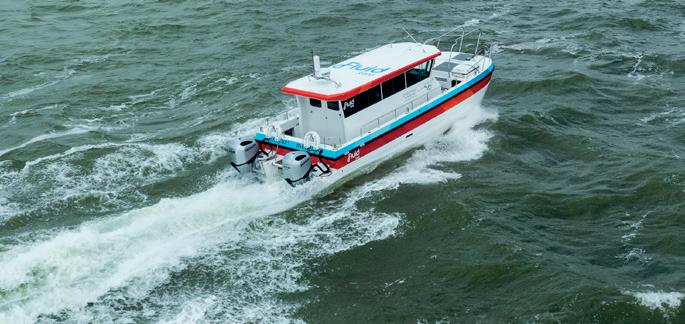
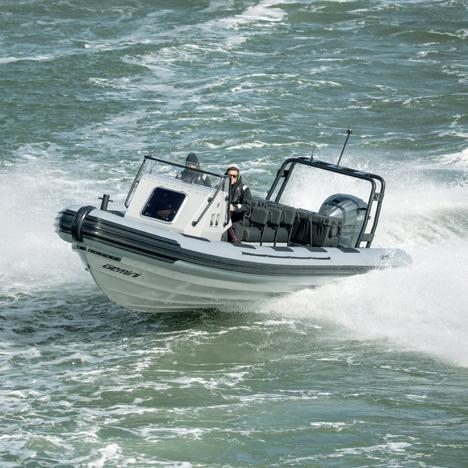


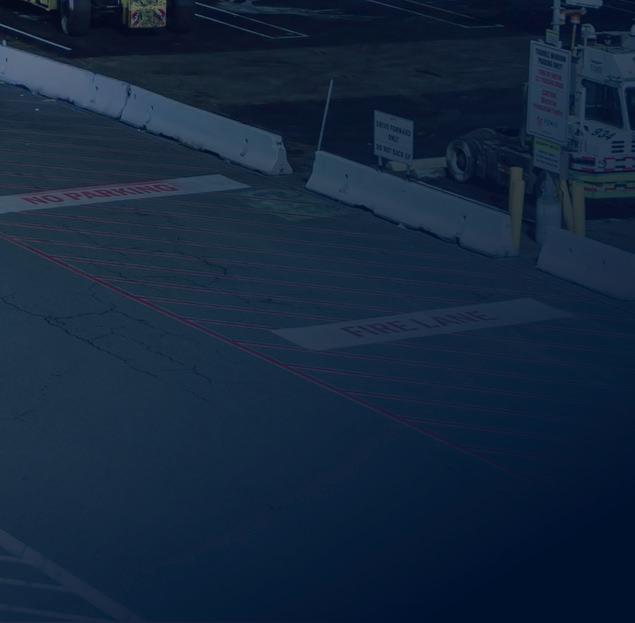
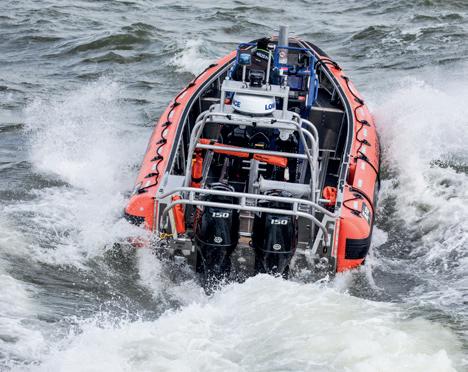
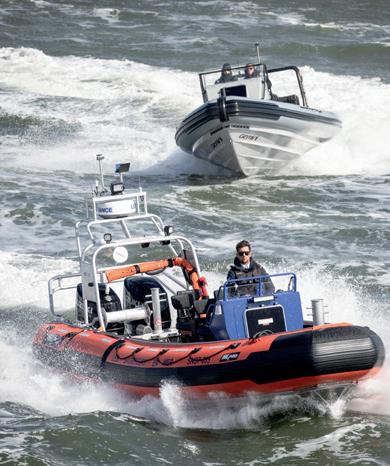
Demonstrations
Informal

Presentations
Demonstrate your high speed vessel or equipment.
• Attend as a delegate to learn and network.

Jamie Graham, Senior Contract Manager, Kingdom Security, UK discusses the escalating risk posed by unregistered drones to ports and national security.

Drones are now everywhere. Much like the rise in AI, the use of drones for various tasks has become a permanent fixture in our lives. Whether delivering food, capturing aerial photos, assisting in search operations, or conducting building surveys, drones have made many mundane tasks more efficient. However, when unregistered drones enter the airspace around ports, they can pose a significant national security threat.
Kingdom Security, part of Kingdom Services Group*, manages and protects the assets of several ports across Scotland, with specialist teams monitoring the movement of goods and people in and out of the country. Unregistered and unrecognised drones are increasingly problematic for port security. While the tendency is to assume that unidentified drones are operated by harmless enthusiasts, some drones present serious risks.
Ports face multiple security risks that require careful evaluation. Operating under immense time pressures, ports must ensure seamless operations. Unfortunately, many ports lack restricted airspace or designated no-fly zones. While port users must seek permission to operate drones, in various countries there are no laws preventing the public from using drones near port facilities.
The risks posed by drones include unauthorised surveillance and the potential for weaponisation, endangering everyone at the port. Specific vulnerabilities at ports, such as regulatory gaps, overseas threats, public access, and insufficient specialist security, exacerbate these risks.
Even hobbyist drones pose cyber security risks, as they are notoriously easy to hack. Hackers can take control of drones or access their broadcasts, exploiting the lax security often found in consumer drones. Malicious threats can then conduct surveillance or cyber-attacks without physical presence.
While banning drones outright is impractical and would hinder beneficial uses, implementing tighter regulations and more robust countermeasures for unrecognised drones is a necessary step forward. Security protocols should include immediate investigation of unrecognised drones and efforts to locate their operators. Given the range of drones, from
small manually operated ones to larger, long-range models, this task can be challenging. On-the-spot risk assessments must be conducted based on the day’s operations at a port.
If a drone is deemed hostile, security teams should liaise with the police, as drones could be used to gather intelligence for overseas threats. The use of drones in cyber warfare, highlighted in conflicts like the Russia-Ukraine war, underscores the critical need to protect ports from such threats.
Threat assessments should consider areas where drones might hover or land, employing motion-detection cameras and other technologies to alert security teams. It is also crucial to evaluate spaces where drones could access networks and visual data.
‘‘
Furthermore, ports using drones for security must implement stringent measures to prevent hacking. While drones can enhance security by monitoring for emerging threats or suspicious activities, ensuring these drones are secure from cyber threats is paramount.
The escalating presence of unregistered drones around ports poses significant security challenges that cannot be ignored. As drones become more integrated into various tasks, addressing their potential misuse for unauthorised surveillance, cyber-attacks, and even weaponisation is urgent. By implementing stringent control measures, enhancing drone detection technologies, and fostering collaboration with law enforcement, it is possible to mitigate the threats posed by unregistered drones and ensure the safety and efficiency of port operations..
■ Kingdom Services Group* network includes offices across the UK in Edinburgh, Glasgow, Birmingham, London, and Belfast. Internationally Kingdom also has a significant presence in India.
■ The risks posed by drones include unauthorised surveillance and the potential for weaponisation


Join us in November
Empire Riverside Hotel
Powering shipping’s emissions-cutting ambitions
Providing senior executives with a meeting place to learn, discuss and share knowledge of the latest developments in efficient propulsion technology and low flashpoint, low carbon fuels.
EU 2030 Regulatory Requirements and the Emerging Market for Carbon Storage and Capture: Challenges and Opportunities
Sponsored by:




Supported by:

Methanol: Lessons learned from the expansion of vessels operating on methanol
Ammonia: Challenges and solutions (fuel supply, after treatment, new engines, pollution control, fuel tanks)
Bio-Fuels: Operational experience for 2-stroke and 4-stroke engines
Lubricants: what the introduction of new base oils and additive packages into the maritime market will mean for lubricant suppliers, as well as alternative fuel considerations lubricant suppliers
Carbon Capture: emission reduction, findings, and new projects
Hydrogen: ICE, and fuel cell advances
LNG: Methane slip reductions, advances in engine performance
Other energy efficiency applications




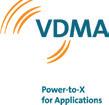
Propulsion & Future Fuels is the longest-running technical conference in the maritime sector, providing senior executives with a meeting place to learn, discuss, and share knowledge of the latest developments in efficient propulsion technology and low flashpoint, low carbon fuels.
Visit: motorship.com/propulsion-and-future-fuels-conference
Contact: +44 1329 825335
Email: conferences@propulsionconference.com










Rachael O’Connor, Navtech Radar’s* Business Development Manager, Industrial Automation Division, contends current Vessel Traffic Systems (VTS), are not a suitable for small ports but solutions are at hand

A report by Statista (Ocean Shipping Worldwide), highlights that approximately 11 billion tonnes of goods, accounting for 90% of the total merchandise globally, navigate the world’s seas each year. For economic powerhouses like the European Union, maritime shipping dominates, constituting 80% of total exports and imports by volume and approximately 50% by value.
The ongoing uplift in maritime traffic, especially in nearby coastal areas, straits, and channels, has brought about increased congestion. Ports, crucial links in the maritime transport chain, have witnessed a transformation in navigation demands due to the rise in maritime transport of goods and the increasing size of ships today.
Furthermore, the global recreational boat market is on a growth trajectory, expected to reach an estimated US$26 billion by 2030. This is driven largely by the rise of tourism, growing interest in outdoor recreational activities, water sports, and recent advances in autonomous marine technology.
All this points to potential challenges, and with maritime growth and congestion comes a higher risk of accidents, most notably collisions. Half of the 2400 global maritime incidents in 2022 occurred within port boundaries..
VTS was initially designed to minimise traffic delays and improve flow efficiency, but over the years the growing threat around potential disasters in port approaches has led to significant changes in guidance. Subsequently, the digitisation of the maritime sector has meant that sophisticated VTS tools are being used not only for movements and communication between ships, ports and other agencies, but also to provide timely updates on tidal and weather conditions.
The IMO updated its guidelines on VTS, in 2021, to take account of various organisational, operational and
technological developments that had taken place since the previous update in 1997. Contracting governments must arrange for the implementation of VTS, where, in their opinion, ‘the volume of traffic or the degree of risk justifies such services.’ Likewise, there are further responsibilities that fall on governments, VTS operators, ports and ships to keep port operations, and personnel, connected and safe at all times.
Yet, amidst the evolving landscape of maritime transportation, the question emerges: are current VTS systems equipped to meet the unique challenges faced by small, complex ports? As port traffic navigates tight channels, low bridges, and comprises vessels of varying sizes, the need for tailored solutions becomes increasingly apparent.
While major ports often boast robust VTS infrastructure, smaller ports may find themselves lacking adequate support.
An IRB Industry Report Analysis valued the global VTS market at US$266.2 million in 2023, which is projected to grow to $363.6 million by 2030, with an anticipated compound annual growth rate (CAGR) of 4.5% from 2024 to 2030. That’s big business by any scale and the majority of that is being stumped up by port and harbour operators.
Typical VTS systems use a raft of modern technologies, which all come with a price tag both for capital outlay and installation, and for operating. It’s clear then, that smaller, and more complex ports, need a more tailored solution to help manage this.
Secondly, the technology built for major ports may not be fit for smaller ones. Orthodoxy may suggest that radar systems as outlined in the cost conversation, are effective in many scenarios, but struggle to adapt to the intricacies of
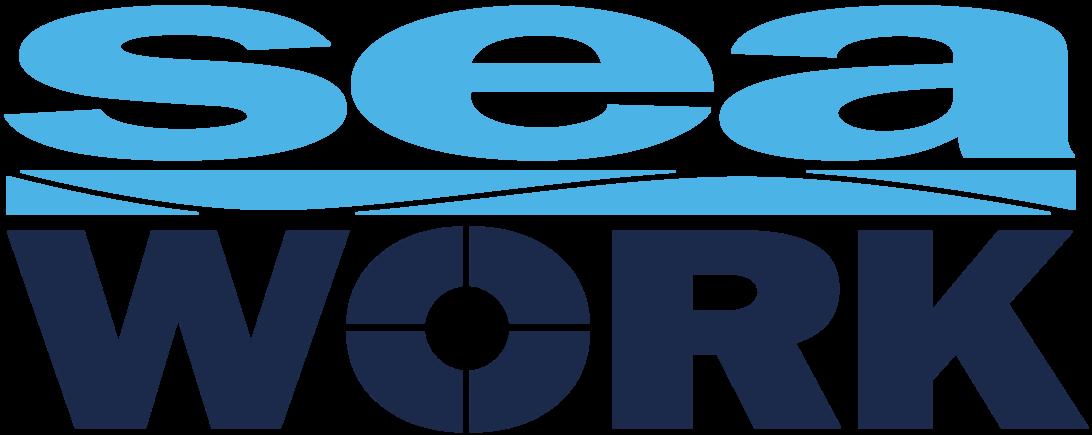




In this landscape of uncertainty, the integration of high-resolution radar technology emerges as a beacon of hope for small, complex ports ‘‘
smaller ports. Challenges conventionally cited include lowresolution radar systems with large blind spots, or inadequate coverage of narrow waterways and under bridges, or even smaller objects that may be a potential collision hazard, such as kayaks or even swimmers.
Finally, many ports are extremely complex in their nature, with blind spots, varying water levels, narrow entries and sometimes only have the capacity to receive vessels in transit for refuelling, waste transfer or for the transfer of cargo. These have their own set of challenges when considering current VTS systems, albeit under the same guidance, and potential constraints and reporting procedures, as the world’s largest.
Radar has been a maritime mainstay for nearly a century, and makes up one of the three key sensor technologies alongside ‘AIS’ (automatic identification system) a broadcast system that allows for updating data on connected vessels automatically. The third is ‘radio detection finder’, which obtains maritime information that helps locate the direction and source of radio signals.
With radar taking the lead on the transmission of navigational information to determine the size and speed of any incoming object to a distance of several miles, it’s critical that this component of VTS can operate in and around small, complex ports, so situational awareness, and response efficacy within VTS operations are not compromised.
To address these challenges, it is essential to incorporate
the latest high-resolution marine radars operating in the W-band (76-77 GHz). These advanced systems can augment traditional marine radar (X-band and S-band), offering highresolution detection capabilities in all weather conditions. In addition, W-band radars are much smaller and require much less infrastructure overhead.
While X-band radars provide long-range detection, they invariably compromise on resolution to achieve their extended range. This trade-off can diminish their effectiveness in situations where distinguishing between different targets in cluttered spaces is vital. Consequently, this reduces their operability and effectiveness in smaller ports, creating a gap in sensing capabilities. W-band, however, has high update rates, meaning it can react to, or track and monitor fast moving objects, and see objects that are closer to other ones – known as target separation.
In this landscape of uncertainty, the integration of highresolution radar technology emerges as a beacon of hope for small, complex ports. High-resolution radar offers unparalleled detection capabilities, in congested environments. These radars promise to enhance safety and efficiency where it’s needed most, providing a critical layer of support for vessels navigating the intricate waterways of small ports.
But can current VTS systems be effectively deployed in small, complex ports, or do we need tailored solutions to navigate these intricate channels? The answer lies in a holistic approach that combines technological innovation, such as high-resolution radar, with a deep understanding of the unique challenges faced by smaller ports and the ability of providers to be flexible in responding to these.
■ Navtech Radar* innovates with radar to deliver world-first capabilities in highways safety, critical national infrastructure security and industrial automation. Its solutions provide reliable performance in all conditions and push the boundaries of what is traditionally possible, using its unique radar technology. Navtech is a member of ITS America. https:// navtechradar.com/innovation-lab/radar-based-localisationfor-vessels/

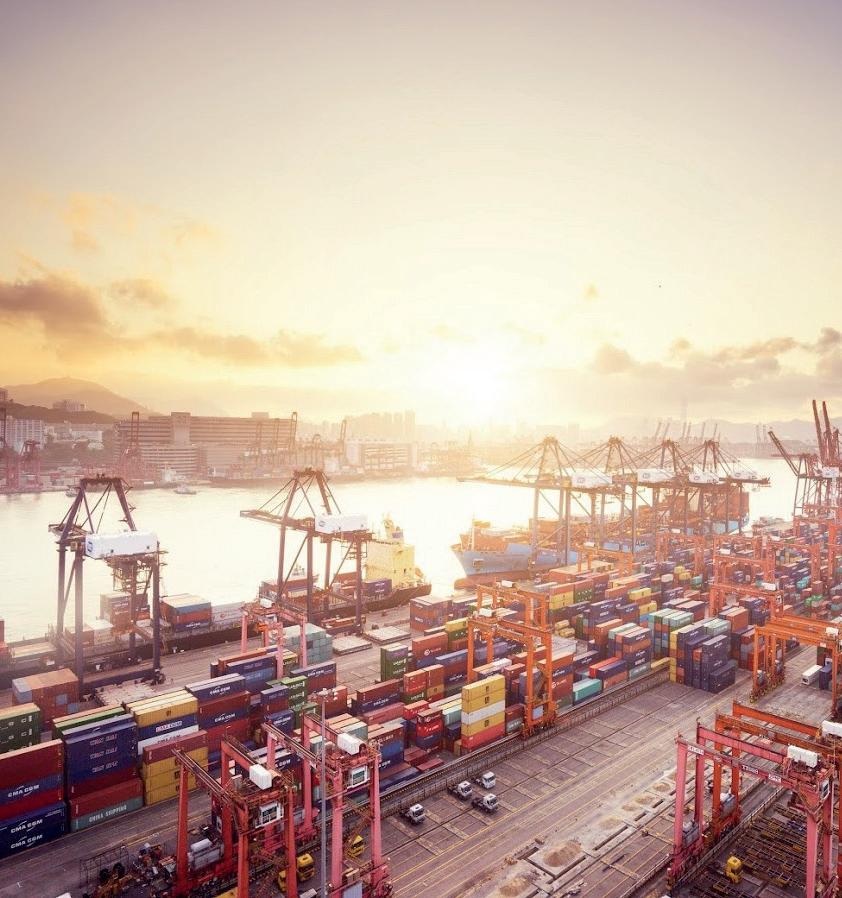







Richard Hepworth, Business Unit President at Trelleborg Marine and Infrastructure, shares his insight into the latest innovations in port development, highlighting the safety benefits of modernising mooring operations and the positive impact of advanced fender infrastructure

Contrary to the belief that the Ports 4.0 concept will introduce sweeping changes, the reality is that most ports will experience a gradual and ‘imperfect’ transformation. While advanced ports like Rotterdam and Singapore serve as models for less developed ports, the majority still depend heavily on manual labour and physical operations which, over time, will be influenced and improved by greater access to data. This means that progress will involve the steady integration of sub-systems, much like assembling pieces of a puzzle, rather than a sudden, drastic overhaul. The pace of change will largely be influenced by the scale of the transition, the cost of modernising operations and also the influences of the labour force in implementing these, especially in ports that are heavily unionised.
To begin with, it’s essential to strengthen the critical interface between ship and port, both on land and at sea, by leveraging a combination of technologies and physical innovations that connect port operations. This enables operators to analyse performance and use data to improve decision-making. These systems integrate assets such as mooring equipment, ship performance monitoring, and navigation systems, all supported by cloud and Internet of Things (IoT) technologies.
The United Nations Conference on Trade and Development (UNCTAD) has called on port authorities to accelerate the adoption of advanced technologies to enhance clearance
times and labour productivity. This push comes as the IMF projects global economic growth – baseline 3.2% over the near term – placing additional pressure on ports to accommodate larger vessels and increased trade volumes. Simultaneously, ports must meet stringent environmental, social, and governance (ESG) requirements to reduce emissions and improve safety.
Upgrading berthing and mooring operations is crucial due to their impact on efficiency, environmental sustainability, and safety. As port operators are well aware, traditional mooring systems using ropes are time-consuming and hazardous, with the significant risk of accidents. For example, the UK Protection and Indemnity (P&I) Club reported in 2016 that 5% of injuries during mooring operations in the preceding 20 years were due to equipment failure.
There are scalable approaches to improving the safety, efficiency and environmental aspects of berthing vessels. Firstly, dynamic line tensioning systems can improve the accuracy of vessel mooring by using situational data to adjust mooring lines, ensuring the appropriate amount of tension is applied automatically to restrain the vessels, therefore narrowing any manual margins of error that could contribute to a rope snapping.
The bigger but more impactful leap for the industry is the gradual adoption of rope-free mooring systems. These use vacuum technology to rapidly secure vessels at berth, reducing motion from external forces and providing live data to improve ports and vessels’ productivity. Although this is a

new way of working, the benefits are considerable. A recent Trelleborg study on the use of vacuum mooring systems reported reductions to mooring and turnaround times, fuel consumption and carbon emissions. It focused on an Australian port in the state of Victoria which is subject to tidal constraints and navigation through a narrow channel with limited passing options. Using data averaged over a two-year period from a live feed obtained from a port in the Baltic Sea operating 12 vacuum mooring pads, it identified that mooring times could be reduced from a total of 50 minutes to three minutes.
A different study also demonstrated that the same vacuum mooring solution significantly reduced surge and sway for a container vessel, increasing berth operability from 65% to 95%. Collectively, these significant reductions limit personnel involvement, reduce human error, and enhance safety while drastically cutting fuel consumption and emissions.
Transitioning to automated mooring systems requires a mindset shift among port operators, looking beyond the cost of implementing systems to recognise the longer-term productivity benefits. The development of product specifications and standards to guide the adoption of vacuum-based mooring systems will also be a crucial element in building confidence in making this transition. These guidelines need to be expedited and we would encourage the leadership teams of port operators to recognise the strategic, commercial and regulatory benefits of implementing these new generation mooring systems.
The latest guidelines from PIANC, WG211, represent a significant shift in fender design best practices – encouraging a green port philosophy, and underscoring the importance of considering the lifecycle and recyclability of assets like fender systems. Offering comprehensive recommendations for fender systems, the guidelines stress the importance of rigorous testing, site-specific information and take a whole system approach covering application, engineering, design fabrication and testing, and installation and maintenance. This approach integrates the fender system as an essential component of marine infrastructure. As vessel sizes and port congestion increases, the role of fenders in ensuring maritime safety and operational efficiency becomes critical.
The WG211 guidelines include a dedicated chapter on sustainability, highlighting the importance of integrating environmental considerations into fender design. They encourage the use of sustainably sourced rubber and technologies that reduce the carbon footprint of the fender system. This comprehensive approach aims to enhance environmental stewardship across the industry, ensuring that fender systems not only meet functional requirements but also contribute positively to global sustainability mandates such as the United Nations’ Sustainable Development Goals (SDGs). Many operators might not see this as a priority but demonstrating the sustainability credentials of infrastructure
will continue to increase driven by factors such as Scope 3 emissions reporting and broader environmental scrutiny throughout supply chains.
Looking ahead, digitalisation will also help ports to understand their operational conditions better which will result in optimised fender designs, reduced costs, and more efficient port operations. They will become smarter and able to collect berthing data regarding the accuracy and speed of berthing operations.
These data capabilities will assist in optimising fender design and lowering costs. Coupled with improved inspection processes and maintenance schedules, the service life of these assets will also be extended. To drive this, Trelleborg will be prototyping smart fenders in two ports this year. One is based in the Middle East and one is in Europe. We are aiming to supply smart fenders, by 2025, that will be able to capture berthing data which in turn will help with their maintenance and influence future designs. Also, our fenders will have QR codes on them to enable operators to easily access useful information about the system such as manufacturing, design, sustainability and maintenance. It will also send reminders for regular inspections to the end users when these are due.
Progress in quay line system design is highlighted by the adoption of automated mooring systems and significant advances in fender selection, design and construction ‘‘
The maritime industry is undergoing a significant transformation through the integration of IoT technologies, driving efficiency, sustainability, and safety. Innovations such as Trelleborg Marine & Infrastructure’s automated mooring systems and the latest WG211 fender guidelines from PIANC highlight this shift. The future of port development lies in the strategic integration of these advanced technologies and sustainable practices, in addition to ongoing consideration of fender selection and design – taking specific factors such as cyclic conditions into account.
Ports will experience gradual transformation, characterised by incremental integration of sub-systems rather than sudden overhauls. Strengthening the interface between ship and port through connected technologies will enable datadriven decision-making and performance optimisation. By embracing innovations in mooring and fender systems, the maritime industry can achieve significant gains in efficiency, safety, and environmental stewardship, steering towards a more sustainable and efficient future.
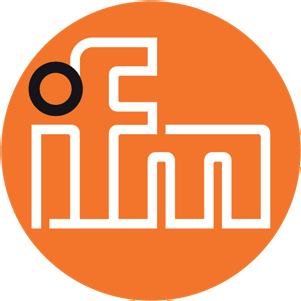
ifm electronic gmbh ifm is one of the world’s leading sensor companies in the automation of measurement and control, optimizing technical processes in almost all industries.
+49 201 24 22 0 info@ifm.com www.ifm.com

Bedeschi S.p.A
For more than a century, Bedeschi is providing effective and reliable solutions in a wide variety of industries (bulk handling, marine logistics and mining), capitalizing on synergies and cross competences.
Via Praimbole 38, 35010 Limena (PD) – Italy
Tel: : +39 049 7663100 Fax: +39 049 8848006 Email: sales@bedeschi.com Web: www.bedeschi.com

The BEUMER Group is an international leader in the manufacture of bulk material handling systems:
Overland Conveyor Pipe Conveyor Stacker & Reclaimer Shiploader
Tel.: +49 2521 240 E-mail: info@beumer.com Web: www.beumer.com

Telestack are a leading global manufacturer of equipment for the bulk material handling industry including Ship Loaders/Unloaders, Hopper Feeders, Truck Unloaders, Bulk Reception Feeders, Stockpiling Conveyors, Link Conveyors and Telescopic Stackers. Tel: +44 (0)2882 251100 Email: sales@telestack.com www.telestack.comw
#WeHaveTonnesToTellYouAbout

LASE Industrielle Lasertechnik GmbH
LASE offers innovative and productive solutions for ports by combining state-of-the-art laser scanner devices and sophisticated software applications. We are specialised in the fully automated handling of containers, cranes or trucks.
Rudolf-Diesel-Str 111 D-46485 Wesel, Germany Tel: +49 (0) 281 - 9 59 90 - 0 info@lase.de www.lase.de

DRY AGRIBULK MATERIALS HANDLING SYSTEMS :
– Portable grains pumps
– Pneumatics continuous barge and ship unloaders 100-1200 tph
– Simporter twin-belt unloader up to 2500 tph
– Loaders up to 2500 tph
Complete turnkey projects VIGAN Engineering S.A.
Belgium
Tél.: +32 67 89 50 41 www.vigan.com/info@vigan.com

Over 60 years supporting Container Terminals in port operations: we create strategic value and increase profitability through solid and reliable STS Portainer® and RTG Transtainer® cranes, services & Advanced Port Technologies.
PACECO® CORP. World Headquarters 25503 Whitesell Street Hayward, CA 94545 Tel (510) 264-9288 email@pacecocorp.com www.pacecocorp.com
DELLNER DAMPERS AB
Customised damper and buffer solutions for container spreaders and ship-to-shore, rail mounted gantry and process crane’s. When fitted to spreaders, our dampers protect the hydraulics’ and reduce noise. Our HYBUFF buffers protect operators and prevent damage in the event of an involuntary impact. P.O. Box 51, SE-642 22, Sweden +46-(0)157-45 43 40 www.dellnerdampers.se/

Rohde Nielsen A/S Specialising in capital and maintenance dredging, land reclamation, coast protection, Port Development, Filling of Caissons, Sand and Gravel, Offshore trenching and backfilling
Nyhavn 20 Copenhagen K. DK-1051
Denmark +45 33 91 25 07 mail@rohde-nielsen.dk www.rohde-nielsen.dk
VAHLE is the leading specialist for mobile power and data transmission
VAHLE provides the solutions to reduce the carbon footprint while increasing the productivity. RTGC electrification including positioning and data transmission making RTGC ready for Automation.
Westicker Str. 52, 59174 Kamen, Germany Email: port-technology@vahle.de Web: www.vahle.com

Heavy duty rol e-chain® P4HD.56R
The new heavy-duty rol e-chain meets all the relevant requirements for container cranes of the next and next-but-one generations. Longer and longer travels, greater dynamics, short stress cycles, zero failures.
P4.1 e-chain® Energy chain with optional intelligent wear monitoring for double the service life, travels of up to 1.000 m, speeds of up to 10 m/s and fill weights of up to 50 kg/m.
SFT is the leading fender manufacturer with +60 years of group experience in the design of safety critical fender system that protect vessels, port infrastructure and people.


SAMSON Materials Handling Ltd specialises in the design and manufacture of mobile bulk materials handling equipment for surface installation across multiple industrial segments. Designed for rapid onsite set-up and continuous high performance SAMSON equipment provides an excellent return on investment.
SAMSON Materials Handling Ltd specialises in the design and manufacture of mobile bulk materials handling equipment for surface installation across multiple industrial segments. Designed for rapid onsite set-up and continuous high performance SAMSON equipment provides an excellent return on investment.
Gemini House Cambridgeshire Business Park, 1 Bartholomew’s Walk, Ely Cambridgeshire CB7 4EA

Taylor Machine Works, Inc.
Taylor Machine Works designs, engineers, and manufactures more than 100 models of industrial lift equipment with lift capacities from 4,000-lbs. to 125,000-lbs. YOU CAN DEPEND ON BIG RED!
England, United Kingdom (UK)
Gemini House Cambridgeshire Business Park, 1 Bartholomew’s Walk, Ely Cambridgeshire CB7 4EA
England, United Kingdom (UK)
Tel: +44 1353 665001 sales@samson-mh.com www.samson-mh.com
Tel: +44 1353 665001 Fax: +44 1353 666734 sales@samson-mh.com www.samson-mh.com
3690 N Church Avenue Louisville, MS 39339 USA +1 662 773 3421 contact_sales@taylorbigred.com www.taylorbigred.com
igus® GmbH Spicher Str. 1a, 51147 Köln, Germany Tel. +49-2203-9649-0 info@igus.eu igus.eu/P4.1
igus® GmbH Spicher Str. 1a D-51147 Köln, Germany Tel. +49-2203-9649-0 info@igus.eu igus.eu/P4.1

As one of the leading manufacturers of quick connector systems,Stäubli covers connection needs for all types of fluids, gases and electrical power.
Tel: +33 4 50 65 61 97 connectors.sales@staubli.com www.staubli.com/en-de/ connectors/
We offer the full range of customized fender solutions and maintain production facilities for high-quality rubber products, steel panels and foam fenders. Join the safe side. contact@sft.group www.sft.group

Fogmaker develops, manufactures, and markets fire suppression systems for engine compartments with high pressure water mist. Fogmaker is a market leader for automated fire suppression systems with 200,000 installations in more than 50 countries since 1995.
Tel: +46 470 77 22 00 info@fogmaker.com www.fogmaker.com

MRS Greifer GmbH
Grabs of MRS Greifer are in use all over the world. They are working reliably and extremely solid. All our grabs will be made customized. Besides the production of rope operated mechanical grabs, motor grabs and hydraulic grabs we supply an excellent after sales service.
Talweg 15-17, Helmstadt-Bargen 74921, Germany
Tel: +49 (0)7263 - 91 29 0 Fax: +49 (0)7263 - 91 29 12 info@mrs-greifer.de www.mrs-greifer.de

Orts GMBH Maschinenfabrik
Over 40 years experience constructing and manufacturing a wide range of grabs, including electro-hydraulic grabs (with the necessary crane equipment) radio controlled diesel hydraulic grabs, 4, 2 and single rope grabs all suitable for bulk cargo.
Schwartauer Str. 99 D-23611 Sereetz • Germany
Tel:+49 451 398 850 Fax: +49 451 392 374 soj@orts-gmbh.de www.orts-grabs.de

Künz GmbH
Founded in 1932, Künz is now the market leader in intermodal rail-mounted gantry cranes in Europe and North America, offering innovative and efficient solutions for container handling in intermodal operation and automated stacking cranes for port and railyard operations.
Gerbestr. 15, 6971 Hard, Austria T: +43 5574 6883 0 sales@kuenz.com www.kuenz.com

SANY Europe GmbH
offers a broad spectrum of high-performance mobile port machines such as Reach Stacker, Empty Container Handler, Heavy Duty Forklift Trucks and Material Handler
VISYOy
Conductix-Wampfler

Sany Allee 1 50181 Bedburg, Germany Tel: +49 2272 90531 100 Email: info@sanyeurope.com www.sanyeurope.com
Sany Allee 1 D-50181 Bedburg Tel: +49 2272 90531 100 Email: info@sanyeurope.com www.sanyeurope.com

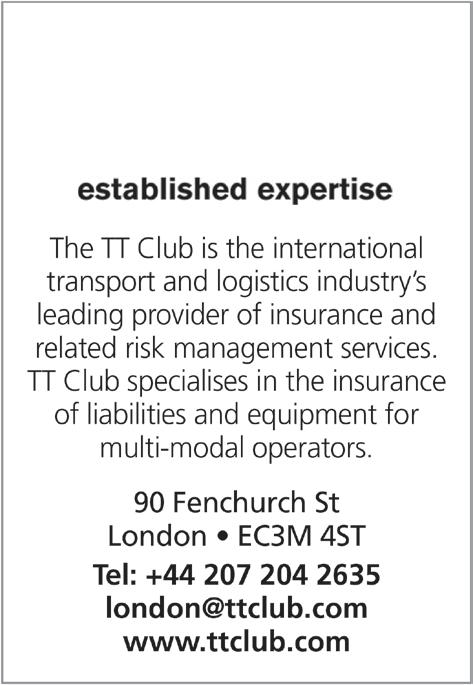
Visy systems reduce expenses, optimize safety & security, and increase throughput capacity via process automation. Our singleplatform gate operating system and OCR solutions manage all cargo, assets & personnel movements via quay, rail or road to keep operations moving.
VISY takes pride in solving operational problems, specialising in gate automation and access control solutions in ports and terminals. Their solutions streamline processes resulting in saving money and increasing productivity.
Tel: +358 3 211 0403
Portchain is the leading provider of berth alignment solutions for container terminals and carriers. Portchain works with leading container carriers and terminal operators to create sustainable win-win solutions to improve operational efficiency for container shipping. Founded in 2017 and based in Copenhagen, Portchain works on a global scale serving container terminals and carriers across Europe, Asia, North America, South America and Africa. Amaliegade 14A, st, 1256 København, Denmark sales@portchain.com www.portchain.com

Taiwan is a major maritime hub on the world’s ocean shipping routes and, because of its strategic location, it has developed into a transshipment hub for East Asian near- and ocean-going ships. In the last few years Asian ports are up against intense rivalry as a result of the economic growth of China and Southeast Asia as well as the expanding trade network in Greater East Asia. No.10, Penglai Rd Gushan Dist. 804004 Taiwan www.twport.com.tw/en/

IDENTEC SOLUTIONS
is an industry-leading, trusted partner in managing and monitoring reefer containers and optimizing entire terminal operations through solutions like Reefer Runner and Terminal Tracker.
Contact: Stephan Piworus, Global VP Sales Marine & Ports, spiworus@identecsolutions.com; Mobile: +49 151 74122606 www.identecsolutions.com
The world specialist in Power and Data Transfer Systems, Mobile Electrification, and Crane Electrification Solutions. We Keep Your Vital Business Moving!
Rheinstrasse 27 + 33
Weil am Rhein 79576 Germany
Tel: +49 (0) 7621 662 0 Fax: +49 (0) 7621 662 144 info.de@conductix.com www.conductix.com

Reefer Monitoring Solutions
Increase efficiency. Reduce costs. Improve safety.
RTE’s 40 years of innovation and experience deliver the most complete system of reefer monitoring solutions for today’s growing terminal operations. Discover what over 80 reefer terminals already have.
Visit us at: rte-usa.com
Or email us at: info@rte-usa.com
New York | Panama
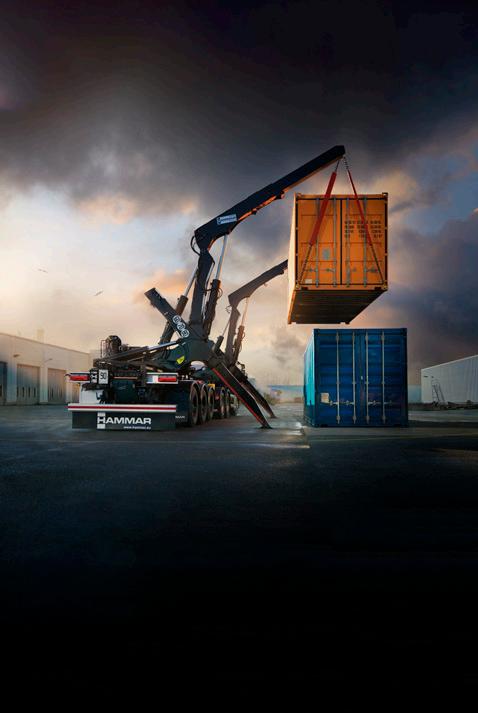
The world leading manufacturer of Sideloaders, self-loading semi-trailers for versatile & efficient container handling. www.hammarlift.com info@hammarlift.com
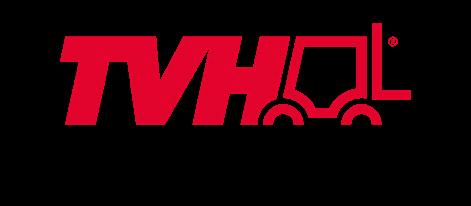
TVH is a global player in the field of spare parts and accessories for heavy forklifts, reach stackers, container handlers, spreaders and terminal tractors. With over 96,000 references in stock and more than 644,000 known references, TVH offers quality replacement parts for many brands and makes, including the hard-to-find ones.
Tel: +44 2476 585 000 sales.team.uk@tvh.com www.tvh.com

ELME Spreader AB
ELME Spreader, world’s leading independent spreader manufacturer supports companies worldwide with container handling solutions that makes work easier and more profitable. Over 21,000 spreaders have been attached to lift trucks, reach stackers, straddle carriers and cranes.
Stalgatan 6 , PO Box 174 SE 343 22, Almhult, Sweden
Tel: +46 47655800
Fax: +46 476 55899 sales@elme.com www.elme.com

The Brain of Logistics
With more than 30 years experience in IT Solutions and Business Operation Consultancy DSP offers a large portfolio of professional services and products to support terminal operations processes and system.
DSP Data and System Planning SA Via Cantonale 38 6928 Manno, Switzerland
Tel: +41 91 230 27 20
Fax: +41 91 230 27 31 info@dspservices.ch www.dspservices.ch
Solvo Europe B.V.
Solvo’s software solutions such as TOS or WMS help container and general cargo terminals take full care of their cargo handling processes and make sure the clients expectations are exceeded.
Prinses Margrietplantsoen 33, 2595AM, The Hague, The Netherlands Tel: +31 (0) 702-051-709 Email: sales@solvosys.com www.sovosys.com


Tideworks Technology provides comprehensive terminal operating system solutions for marine and intermodal terminal operations worldwide. Tideworks works at every step of terminal operations to maximize productivity and customer service. info@tideworks.com +1 206 382 4470 www.tideworks.com
MAFI Transport-Systeme GmbH
Specialised in the development and production of heavy-duty equipment for transporting containers, semi-trailers, cargo/roll trailers and special container chassis in ports and industry.
Hochhäuser Str 18 97941 Tauberbischofsheim, Germany Tel: +49 9341 8990 sales@mafi.de www.mafi.de
TGI Maritime Software is a Terminal Operating System editor and integrator specialized in the support of Small to Medium Terminals. Its expertise is built on 34 years of experience within the maritime sector. TGI provides comprehensive services to its customers all along their projects. OSCAR TOS and CARROL TOS have already been successfully handled by 40 container and RoRo terminals worldwide.
Tel : +33 (0)3 28 65 81 91 contact@tgims.com www.tgims.com
Brunton Shaw UK is a successful manufacturer of high quality wire ropes for a wide range of applications. The company effectively combines more than 130 years of experience and tradition with an up to the minute range of products, and a customer service package ideal for the modern market place.
Tel: +44 1909 537626 Email: info@brunton-shaw.co.uk
www.brunton-shaw.com

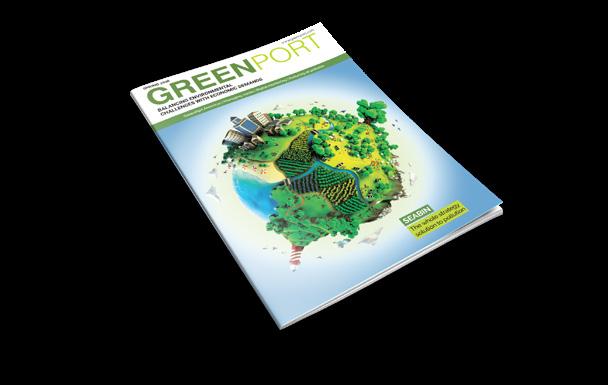
Companies that have taken the “Arctic Shipping Corporate Pledge” will not allow their products to be moved via Arctic routes or for their nominated agents to engage with this trade
The Arctic shipping route will see the deployment of the first Panamax container vessel this year. Does this signal progress with the development of the route or is this a fallacy?
Russia is, of course, keen to progress the development of the route with its usefulness heightened in the light of Russia’s attack on the Ukraine.
The 66,781dwt, 4980TEU capacity Flying Fish 1, operated by Safetrans Line, will ply a service loop between St. Petersburg and points in China. It will also take place against a background of 2023 seeing the introduction of the first regular container service between Asia and Europe using the Artic shipping route. Plying the Northern Sea Route (NSR), one of the three Artic shipping routes, China’s NewNew Shipping Line operated four container vessels along the route between July and November 2023, completing seven voyages in total. All four of the vessels feature light to medium ice protection and offer capacities ranging from 1200 to 2800TEU. NewNew Shipping Line is also known to be actively planning the ramp-up of its service offering.
Flying Fish 1, 24-years old and an Ice-1 class vessel, is understood to be planning a round-trip voyage between August and October.
Ice class vessels are essential during winter and spring but with global warming it is feasible for non-ice class vessels to now routinely traverse the Arctic during the summer months. 2023 saw a number of interesting developments in this respect – the first Capesize bulker, the 169,159 dwt Gingo and numerous Suezmax oil tankers all used the route. Russia sent 1.5 million barrels of crude to China with much of this carried in non-ice class tankers.
Next up, potentially, is establishing an all-year round container operation. Rosatom, the Russian state nuclear agency, recently signed an agreement to this effect with Hainan Yangpu NewNew Shipping at the St. Petersburg International Economic Forum. In effect, it is a Russia-China initiative with the associated development package including building up to five Arctic-class vessels with these key to meeting the goal of all-year-round operations on the Northern Sea Route (NSR).
DP World signed a joint venture with Rosatom in 2023 related to developing and operating supporting port facilities.
Rosatom notes that it anticipates a record volume of cargo moving via the NSR this year, three million tonnes, but over the longer term it expects 50 million tonnes.
Developing Arctic shipping, whether using the NSR, which runs along the Russian Arctic coast from the Barents Sea, to Siberia through to the Bering Strait, or the Northwest Passage (NWP), which follows the northern coast of North America and crosses the Canadian archipelago, is not without significant
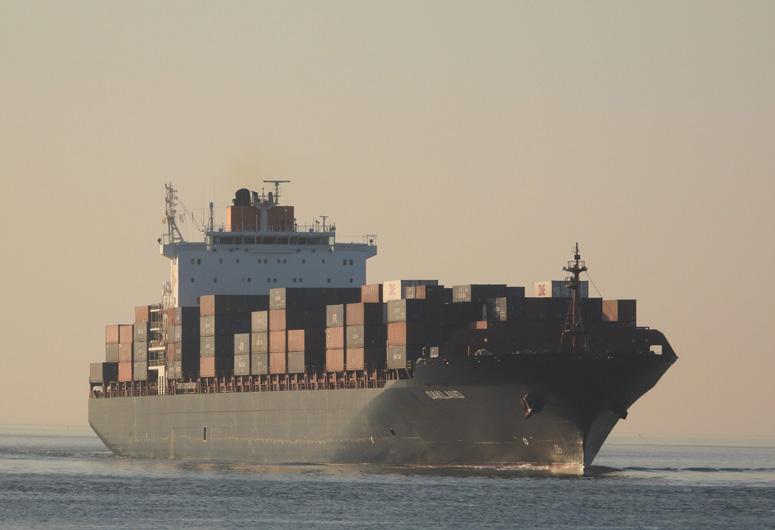
challenges. It is true that in a global warming scenario that the current average containership transit time could be reduced from one month to 20 days or less by 2100 but there are issues in play which could frustrate achieving this objective. Environmental issues are to the fore:
■ The extensive sea-ice loss the Artic has experienced to date is now acting as a climate change magnifying glass achieving warming nearly four times faster than the global average.
■ The Arctic is an incredibly sensitive environmental zone and any increase in shipping activity will inevitably put it at greater risk from the negative effects of an accident, grounding or oil spill. The consequences of these types of event in the Arctic would be so much more severe than in other geographical locations.
■ There are also those parties that have formally announced that they are against Arctic shipping and have united behind the “Arctic Shipping Corporate Pledge.” Consumer goods companies that have taken the pledge will not allow their products to be moved via Arctic routes or for their nominated agents to engage with this trade. Reportedly, approximately 50% of the world’s liner fleet has now taken the pledge.
■ Also, this year will see new IMO regulations come into force that ban the use of Heavy Fuel Oil in the Arctic.
■ Similarly, government actions may follow that necessitate their fleets switching to distillates for voyages to and from the Arctic.
■ Additionally, there are a raft of practical considerations to confront some of which require major investments: new ice breaker capacity; ice-class vessel construction, port side facilities, establishing emergency bases etc. etc.
Surprisingly, 2023 saw greater progress on unlocking Arctic shipping than many parties had expected. There is a sense, however, that despite the impetus provided by renewed Russian efforts that the challenges, regulatory and practical, are building up which may well serve to inhibit fully-fledged system development.

Tailor-made digital solutions for smooth workflows and greater sustainability.
Whether maritime or intermodal ports, globalization and heavily used trade routes are accelerating the trend towards smart ports. Here, the vehicles may drive without people, but never without tires. At Continental, we take into account all facets of terminal operations that contribute to more efficient and sustainable processes.
Our customized digital tire solutions are therefore tailored to the individual needs of port vehicle fleets: Scalable solutions such as ContiConnect for large port operation fleets, ContiConnect Lite, a leaner version for mobile devices and a valve cap sensor solution. So, whatever your fleet requirements may be, you can be sure: we deliver.


Join the world’s leading conference for the port community in Le Havre, France. Keynote Panel includes: Secure your place & book now

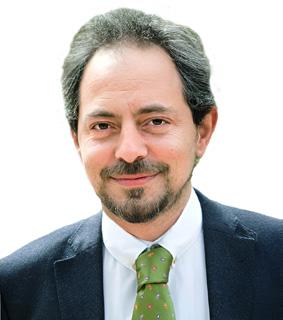

General



Programme out now
Gain insight from industry experts on:
Green Corridors
Electrification of Ports
Decarbonising Cruising
Cruise Infrastructure and Development
Resourcing the Transition to Sustainability
Infrastructure Development for Multimodal Services
Financing Decarbonisation
Green Fuel Transition for Ports
Smart Ports & Technology

Supported by:





Meet and network with over 200 attendees representing port authorities, terminal operators and shipping lines. For more information on attending, sponsoring or speaking, contact the events team:
visit: greenport.com/congress tel: +44 1329 825 335 email: congress@greenport.com
Media Partners: